We expected to see jaguars, and maybe if we were lucky an ocelot, but we really didn't have any expectations beyond that. It's not like we had studied the Pantanal ecosystem in detail in advance. There were jaguars! We wanted to see jaguars! Well, my sister also really really wanted to see a Giant Anteater, possibly even more than she wanted to see a jaguar, perhaps due to the fact that she was an alumna of University of California Irvine, whose mascot is an anteater. But we knew Giant Anteaters were rare and elusive and we didn't actually expect to see any.
As our van bumped its way down the Transpantaneira towards our first lodge, the wildlife began to reveal itself, mostly in the form of birds.
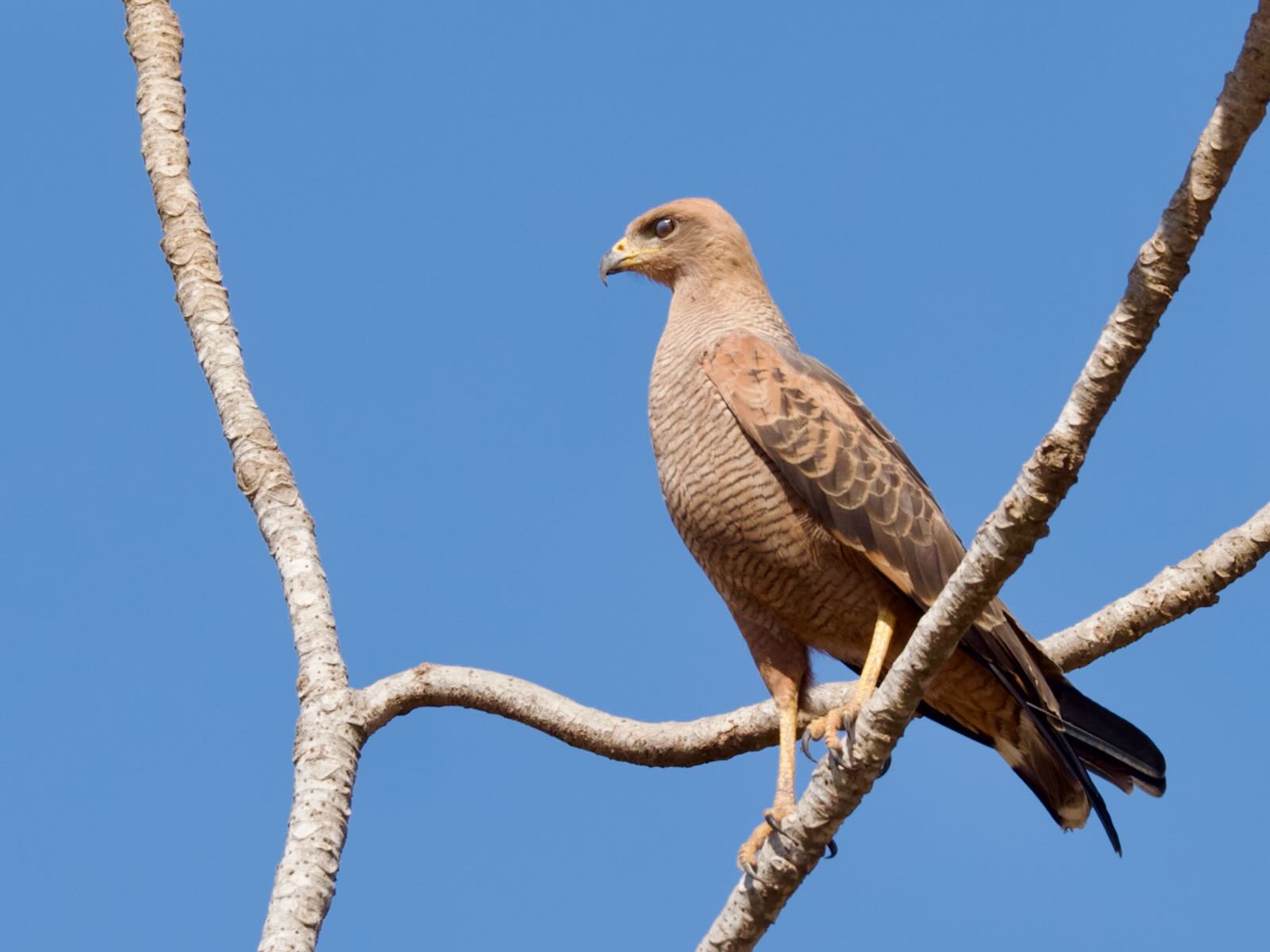
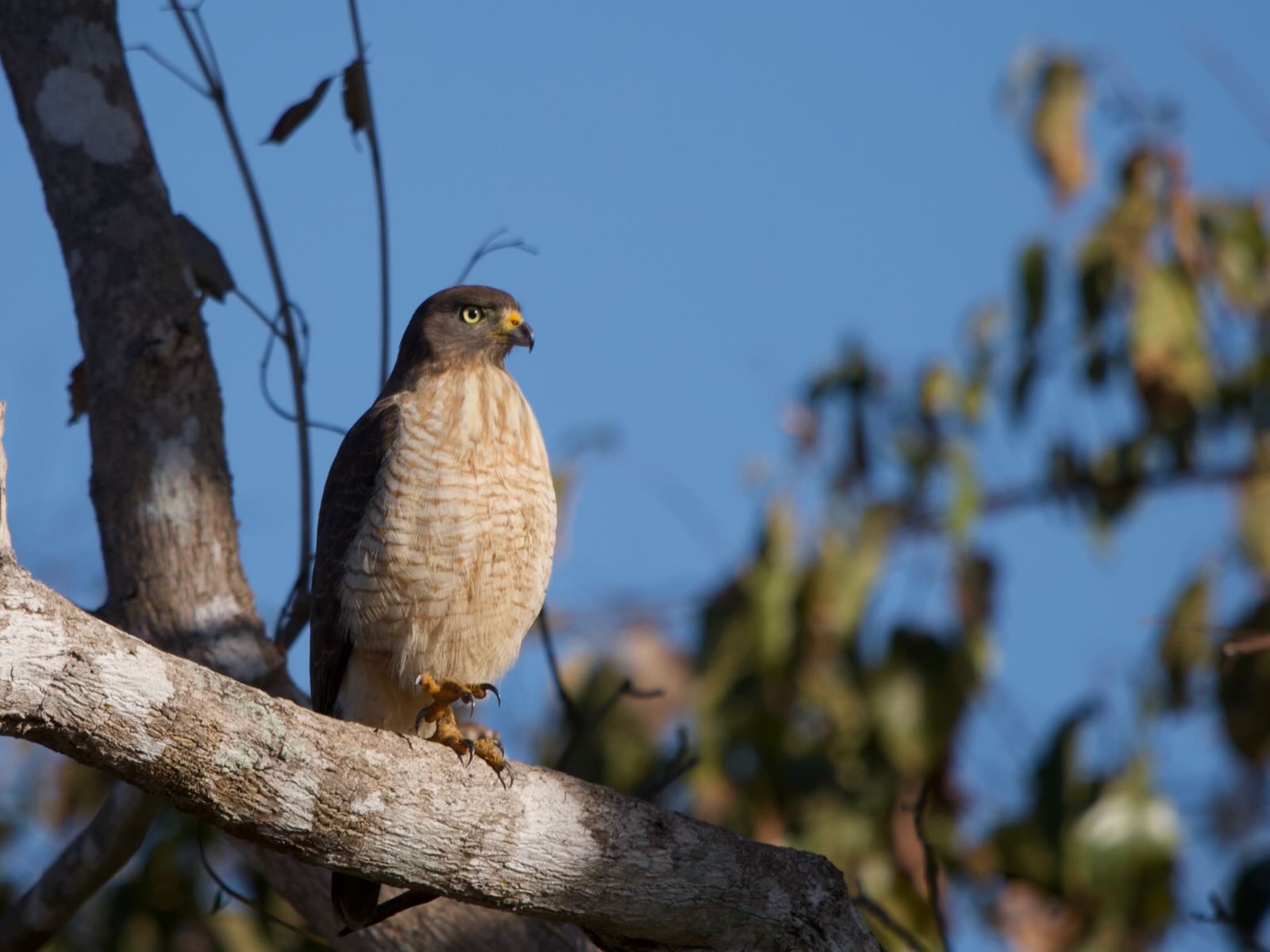
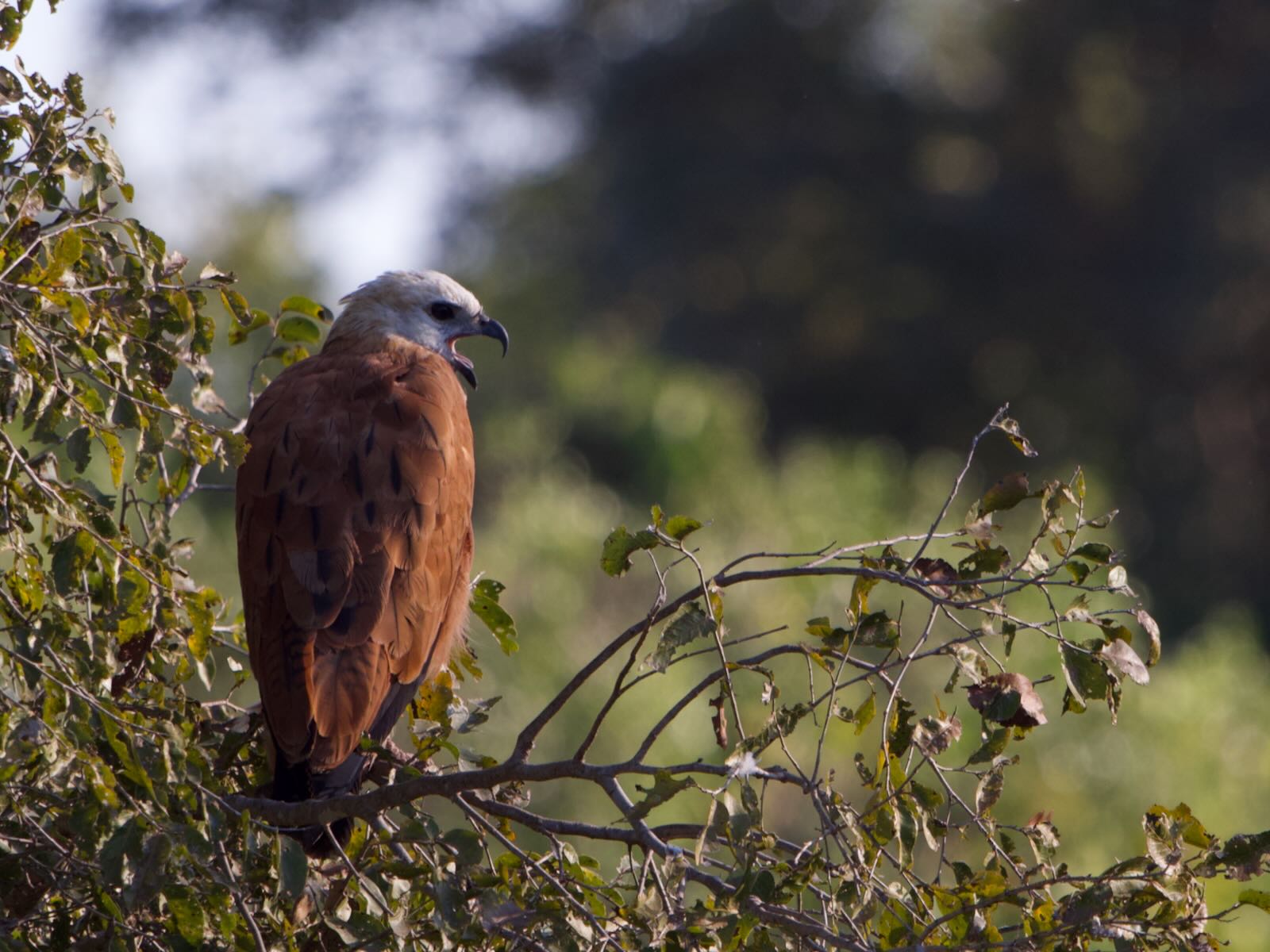
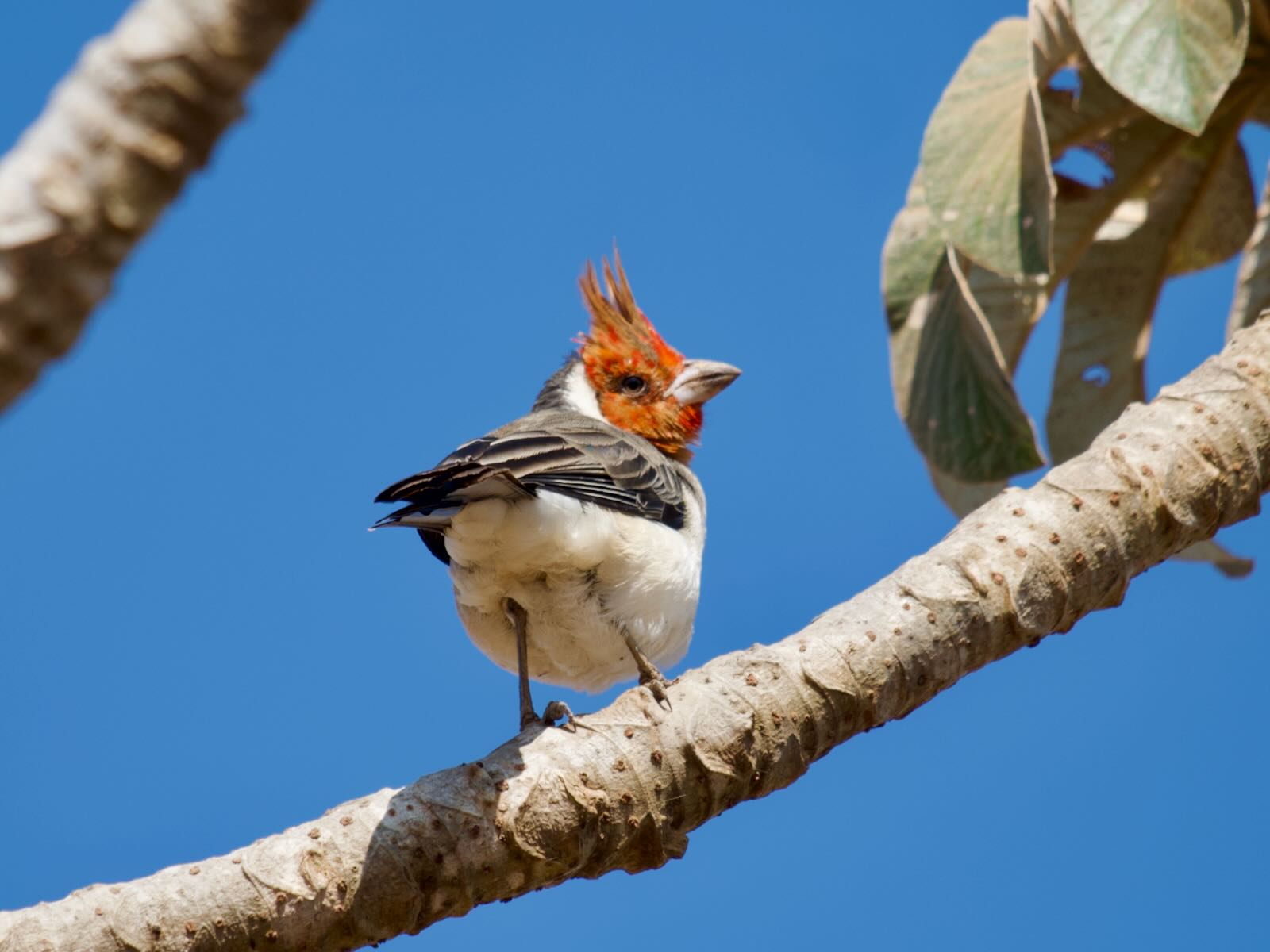
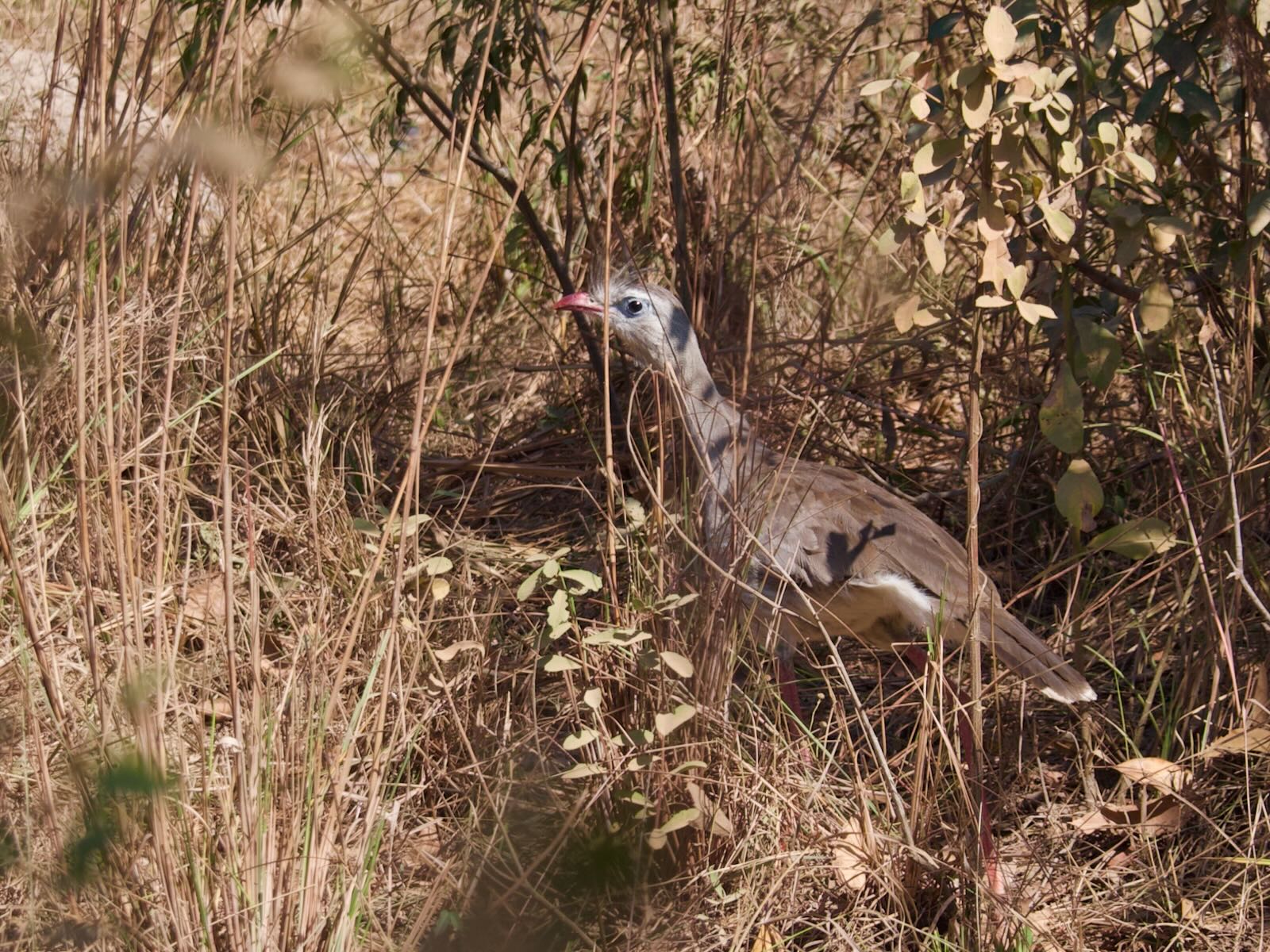
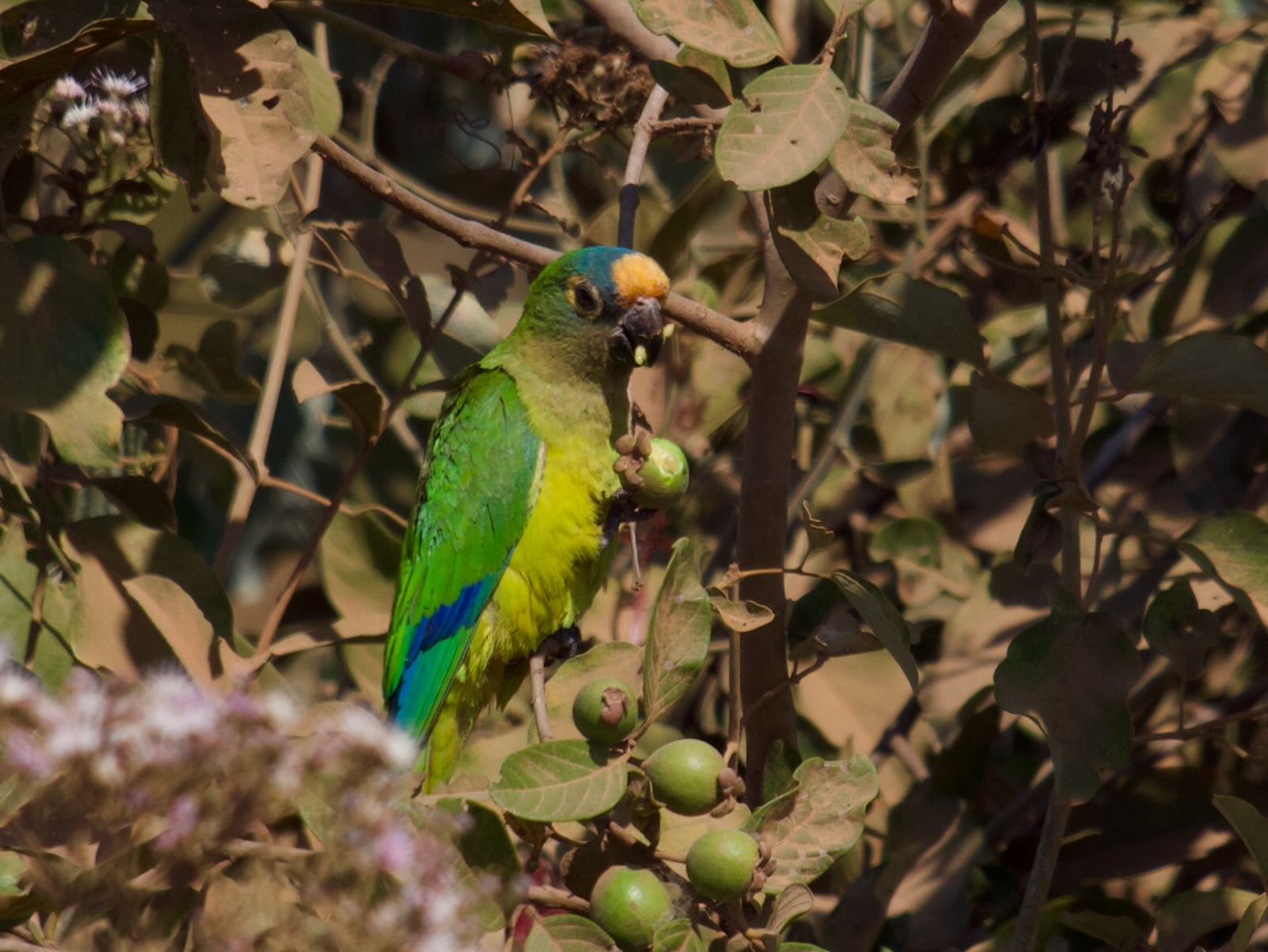
We stayed at our first destination, Piuval Lodge, for two nights. While at the lodge we slept, enjoyed nice buffet meals, and wandered the grounds a bit. We were not allowed to wander very far due to the possibility of jaguar encounters. Fortunately, we saw some excellent animals within a couple dozen yards of the lodge buildings, well inside the obviously-not-jaguar-proof fencing.
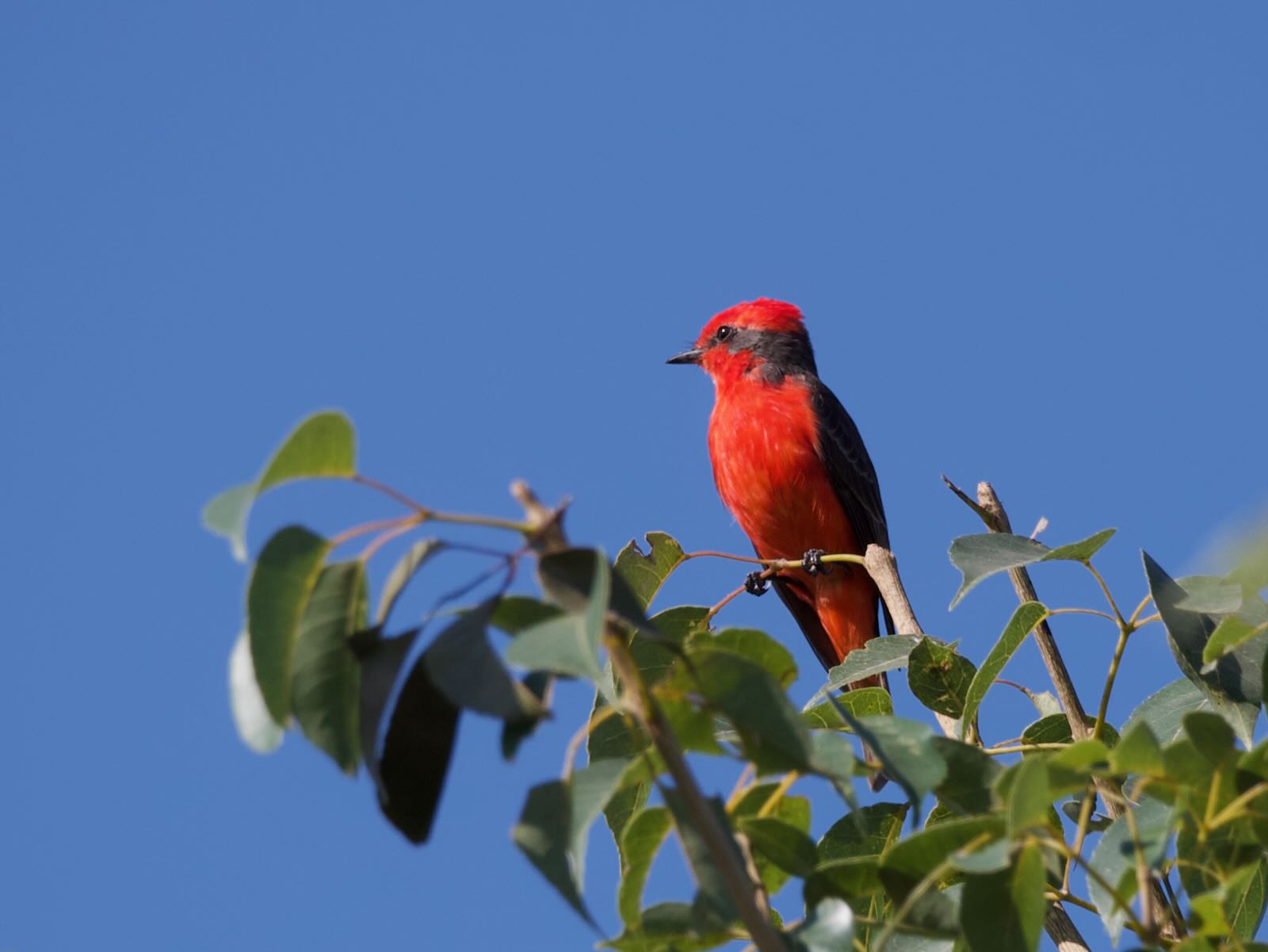
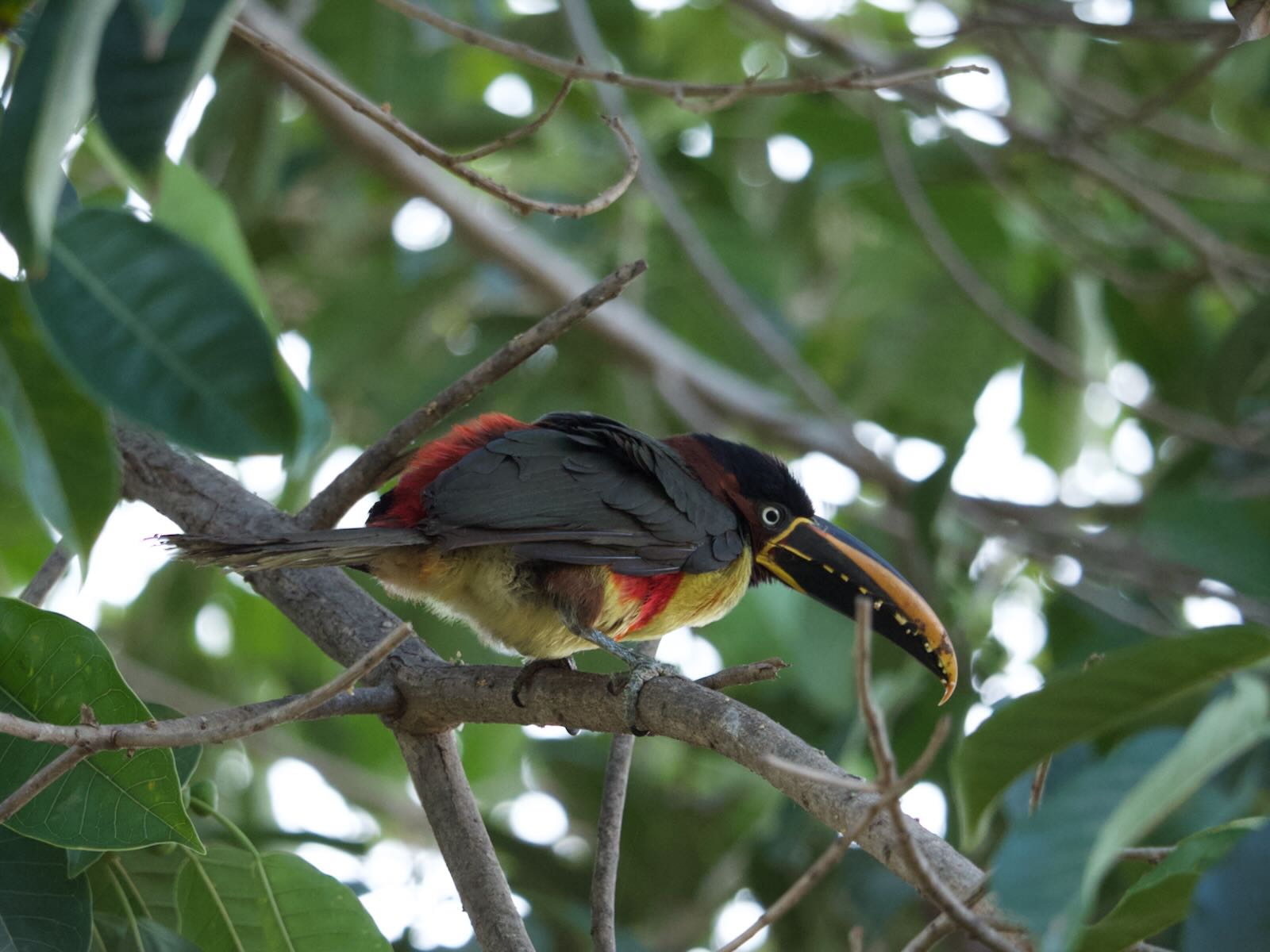
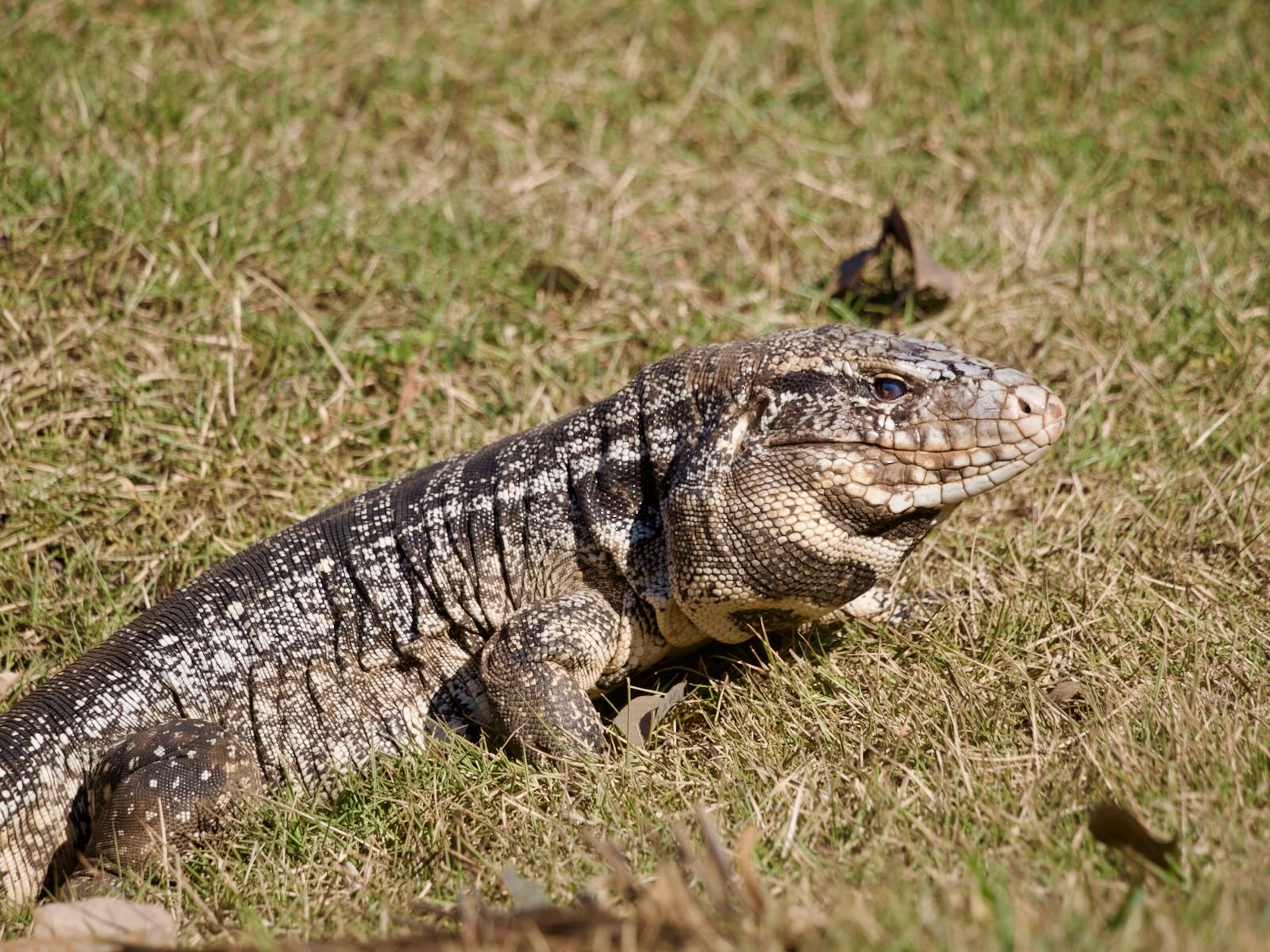
In the mornings, and in the afternoons (continuing a little past dark), our group would board an open air safari-type vehicle and drive around on the large ranch on which Piuval Lodge was situated, looking for wildlife. On these drives and throughout our entire trip we were guided by the super-knowledgeable and super-fun Nathalie.
Nathalie has a Master's degree in Zoology and a Ph.D. in Ecology and Conservation. She splits her time between guiding ecoutourists like us in the Pantanal and working on conservation projects for different species, most of which seem to be extra large (Giant Anteater, Giant Armadillo, Giant Otter…). Earlier she studied frogs so you just know she is a good person at heart. She knows all of the animals and plants worth knowing, and was always eager to share her knowledge and express her enthusiasm for the natural wonders in this amazing part of the world. Also, she learned Speed Uno immediately and quickly began beating us at it regularly. We were so lucky to have her as our guide.
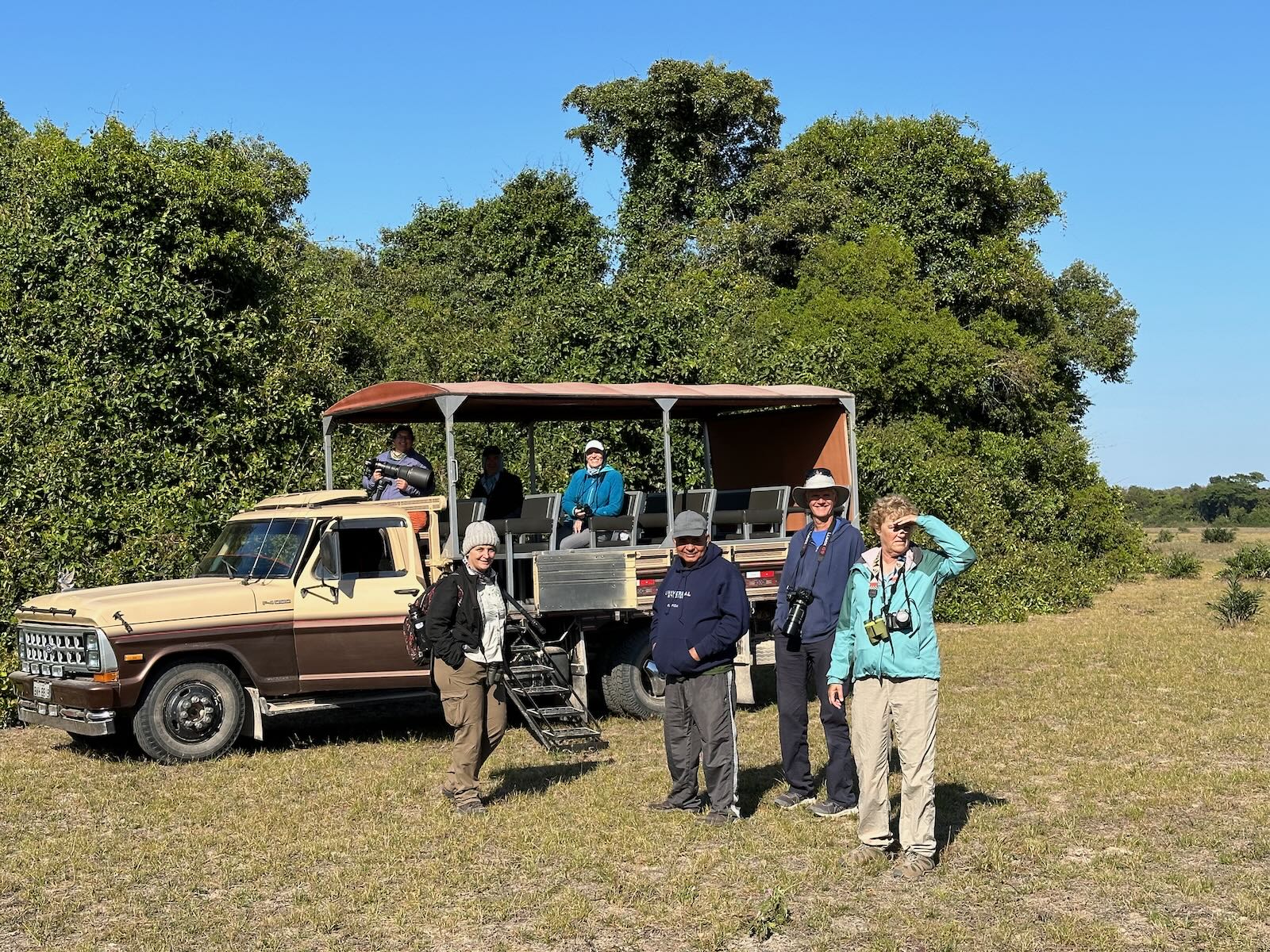
One of the most famous and also most cute animals of the Pantanal is the Capybara, proud owner of the title of World's Largest Rodent. We had all hoped to see a Capybara and sure enough, on our very first outing in the "safari truck", we pulled up close to this extremely chill individual.

And a few of her family members and friends.
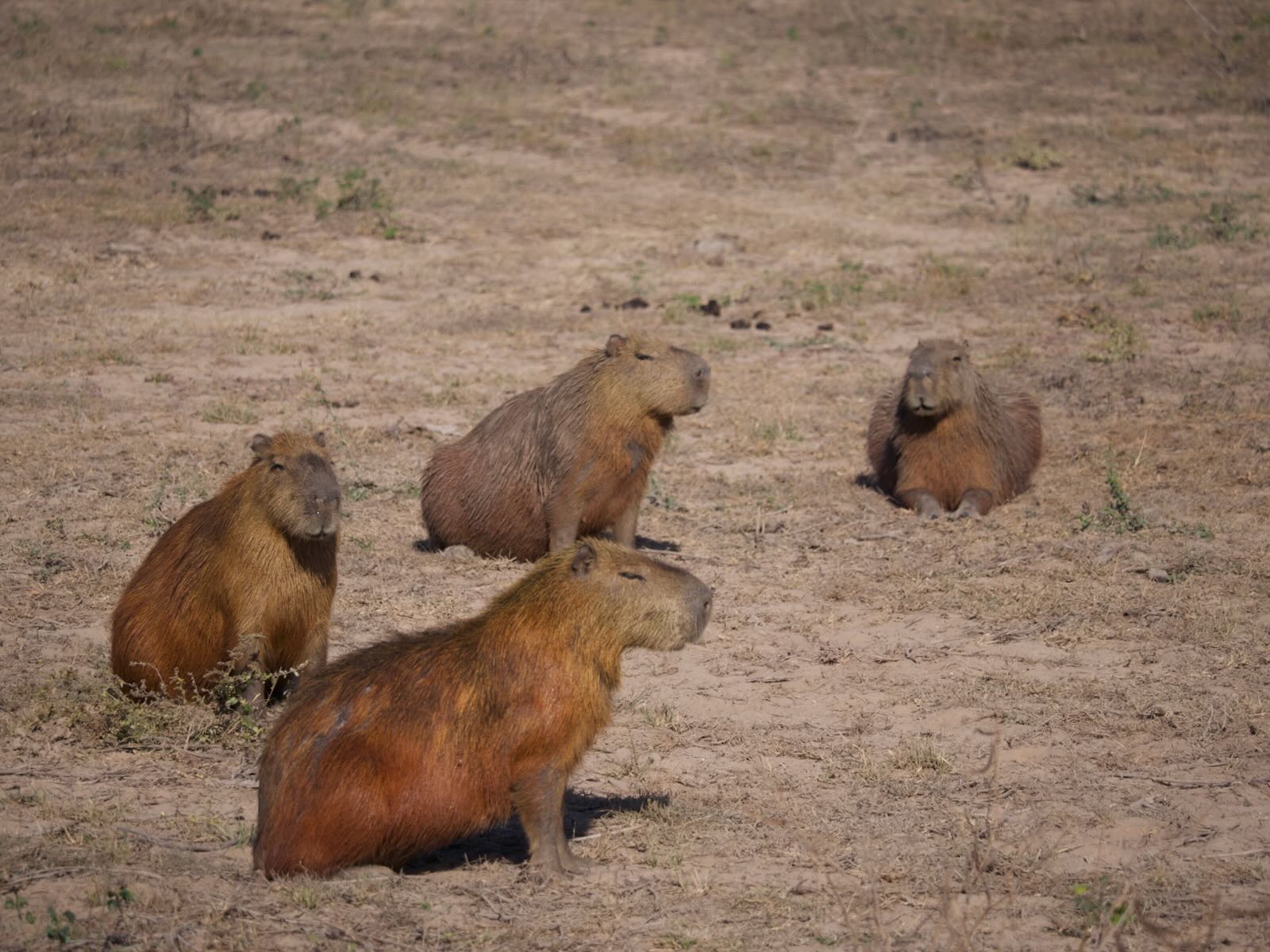
And a few dozen of their family members and friends.
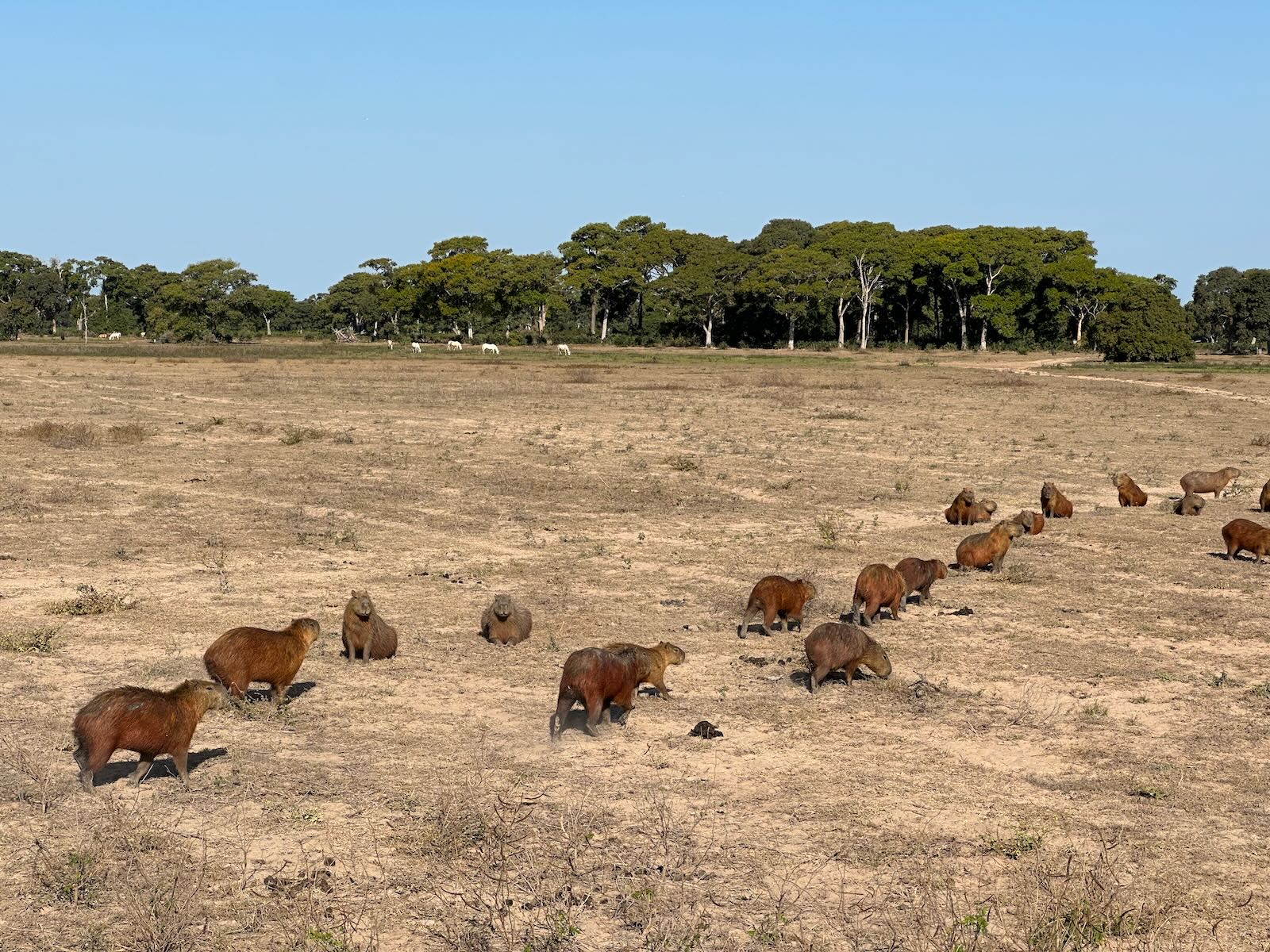
One of the more common and easily identifiable birds in the area is the Greater Rhea, which looks like a smaller (but still quite large) ostrich or emu. Here an adult male is trying to impress a trio of females by showing off his giant wings. They would probably be more impressed if he could use them to actually fly, but nope.
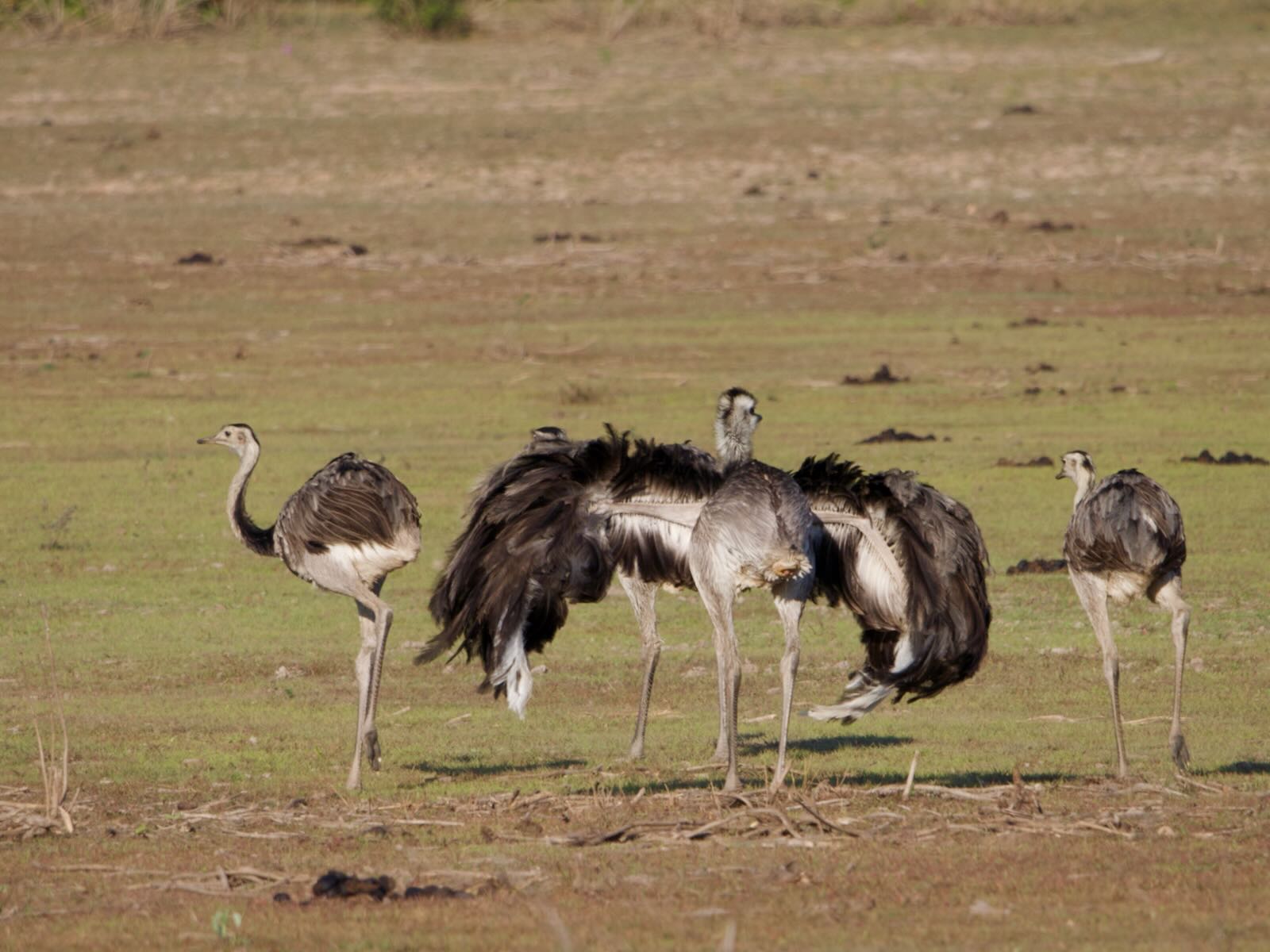
Like basically all tourists, we came to the Pantanal in the dry season. In the wet season much of the Pantanal is flooded, which not only makes it hard to get around but also disperses the water-loving animals over a much larger area, thus making them harder to find. In the dry season many of the animals congregate at the remaining water. Very close to the lodge (but a little further than the Capybaras and Rheas) a couple of ponds attracted a lot of birds.
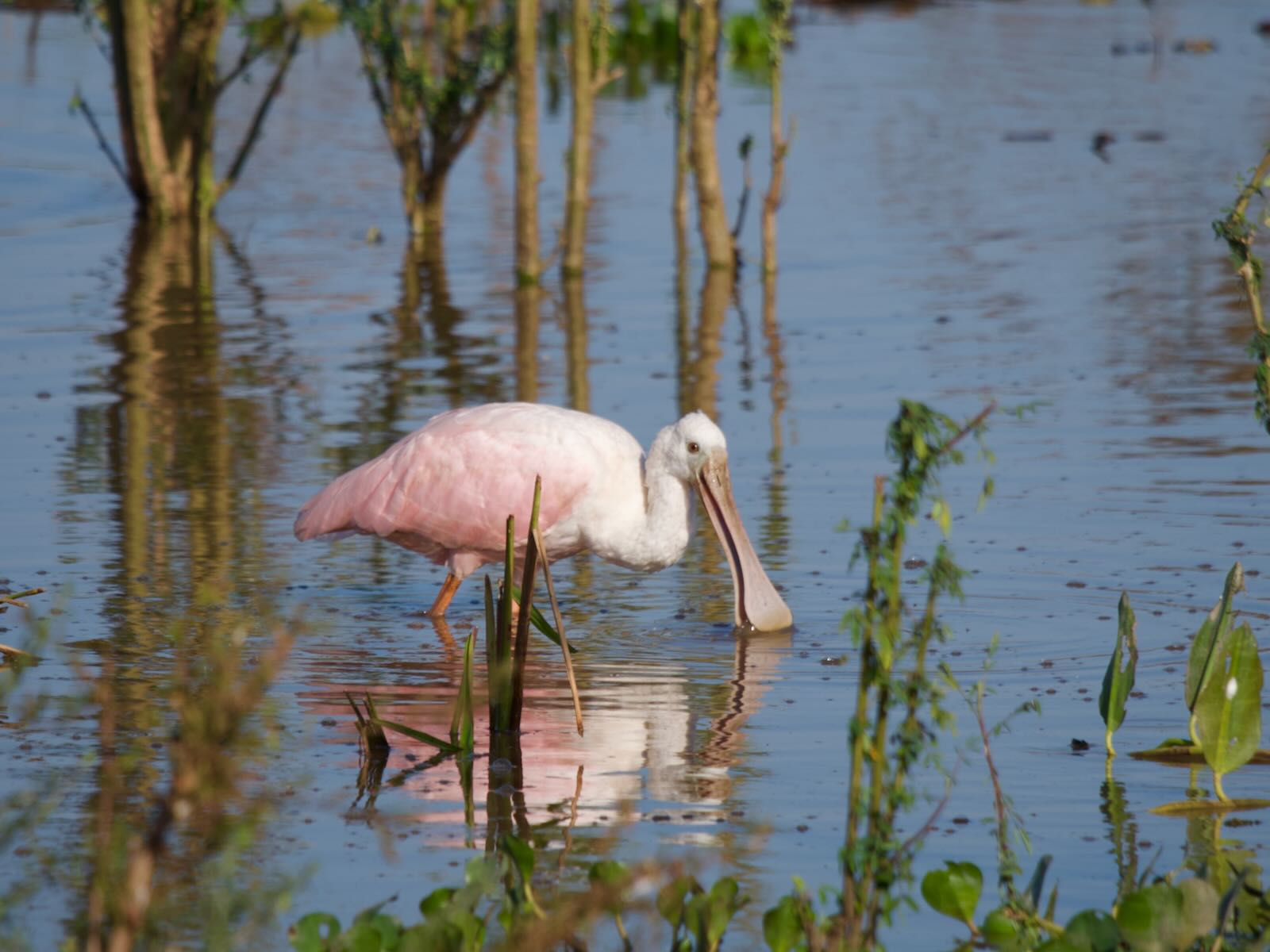
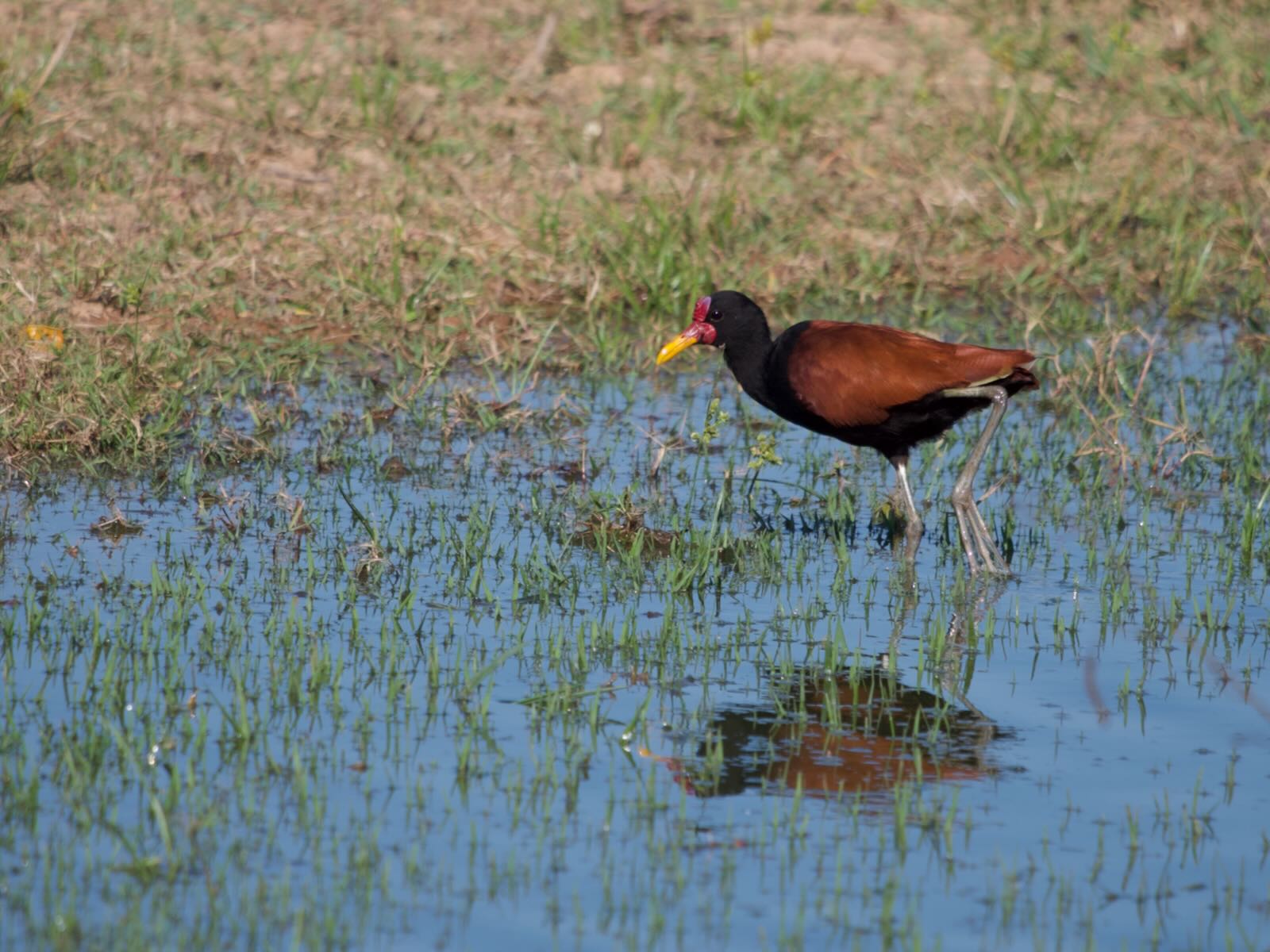
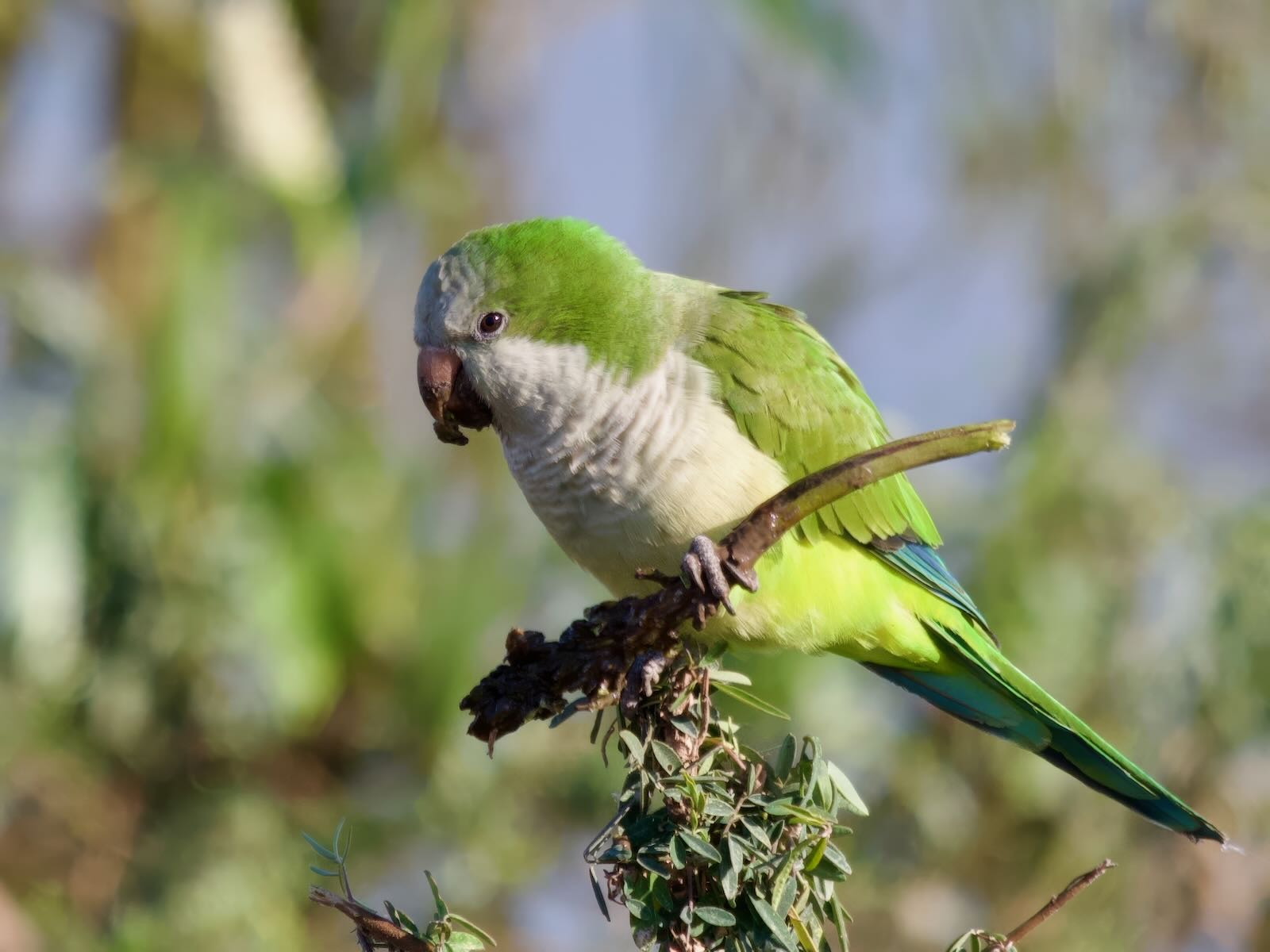
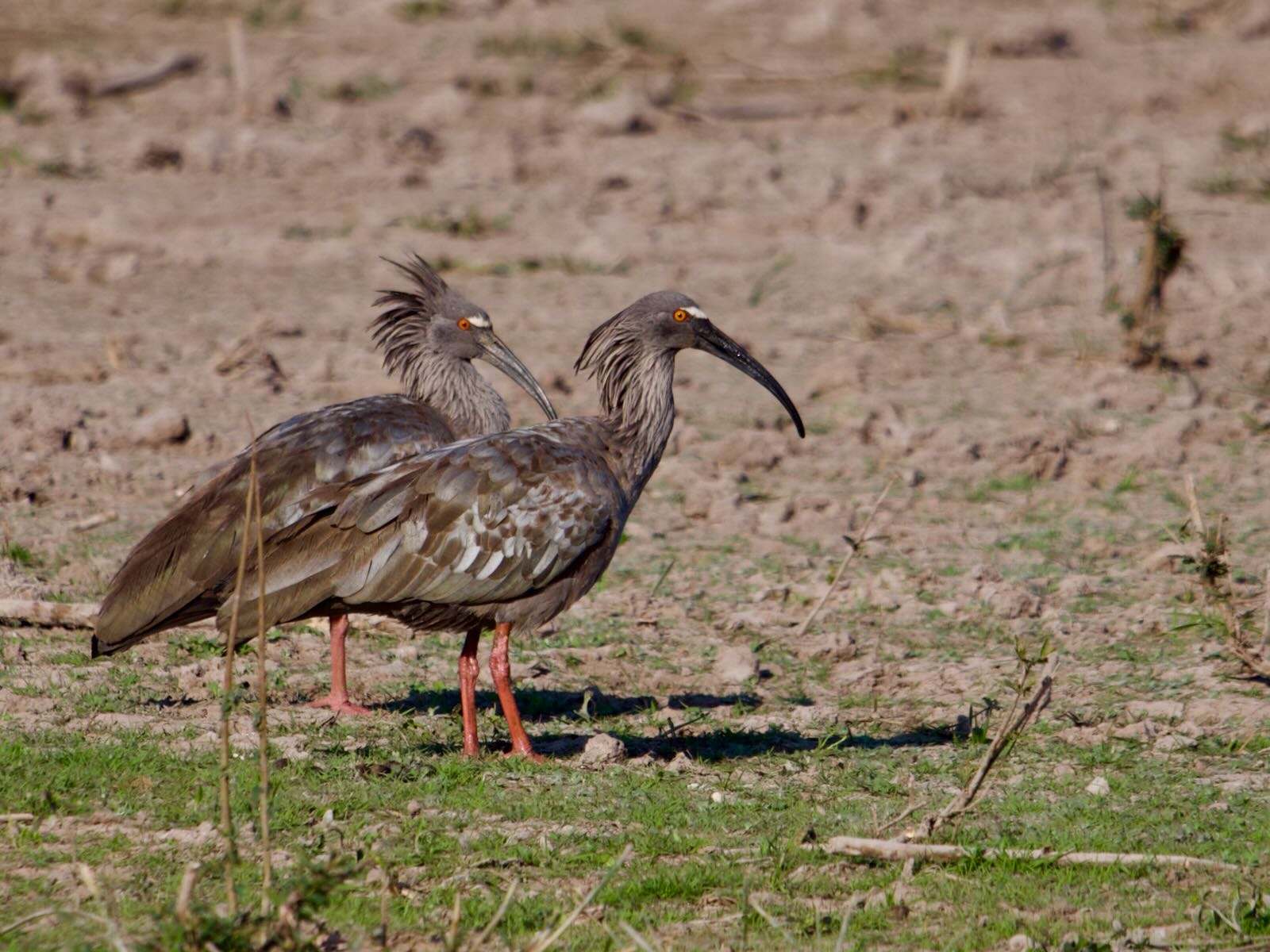
Birds weren't the only animals in the ponds.
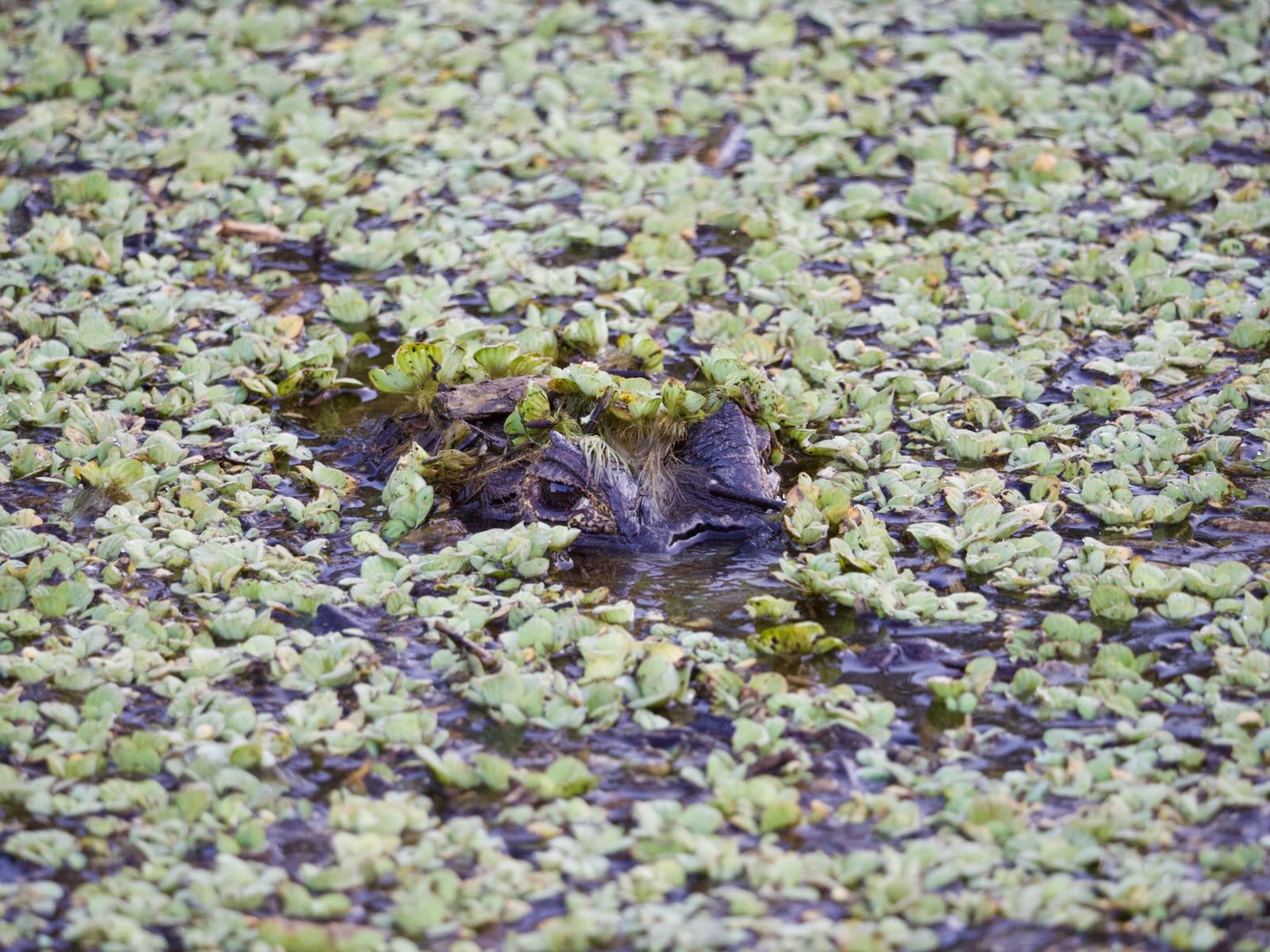

Between the ponds were dry grassy fields, many of which would have been underwater in the wet season, and some low-density trees. A different set of animals could be found here.
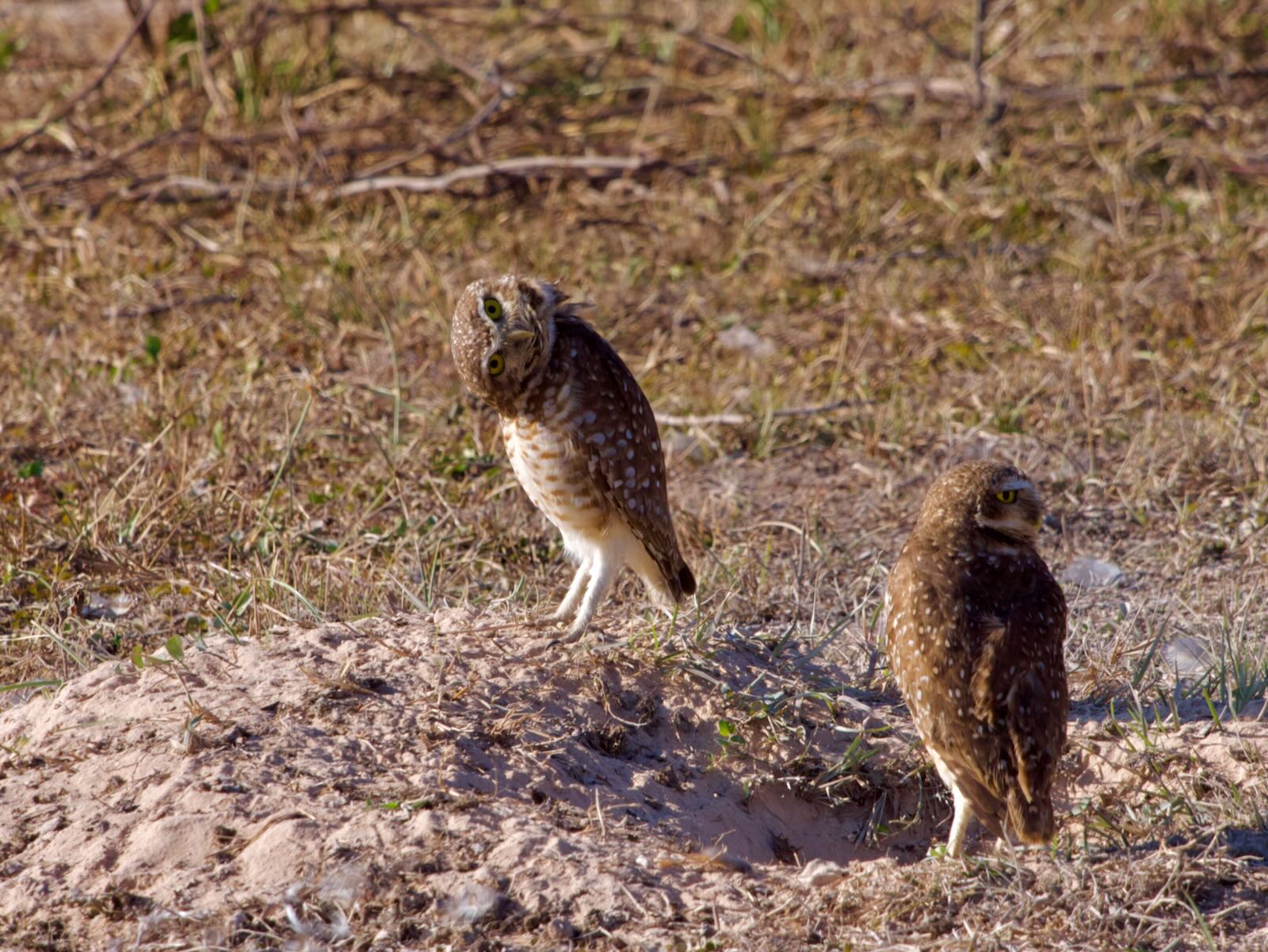
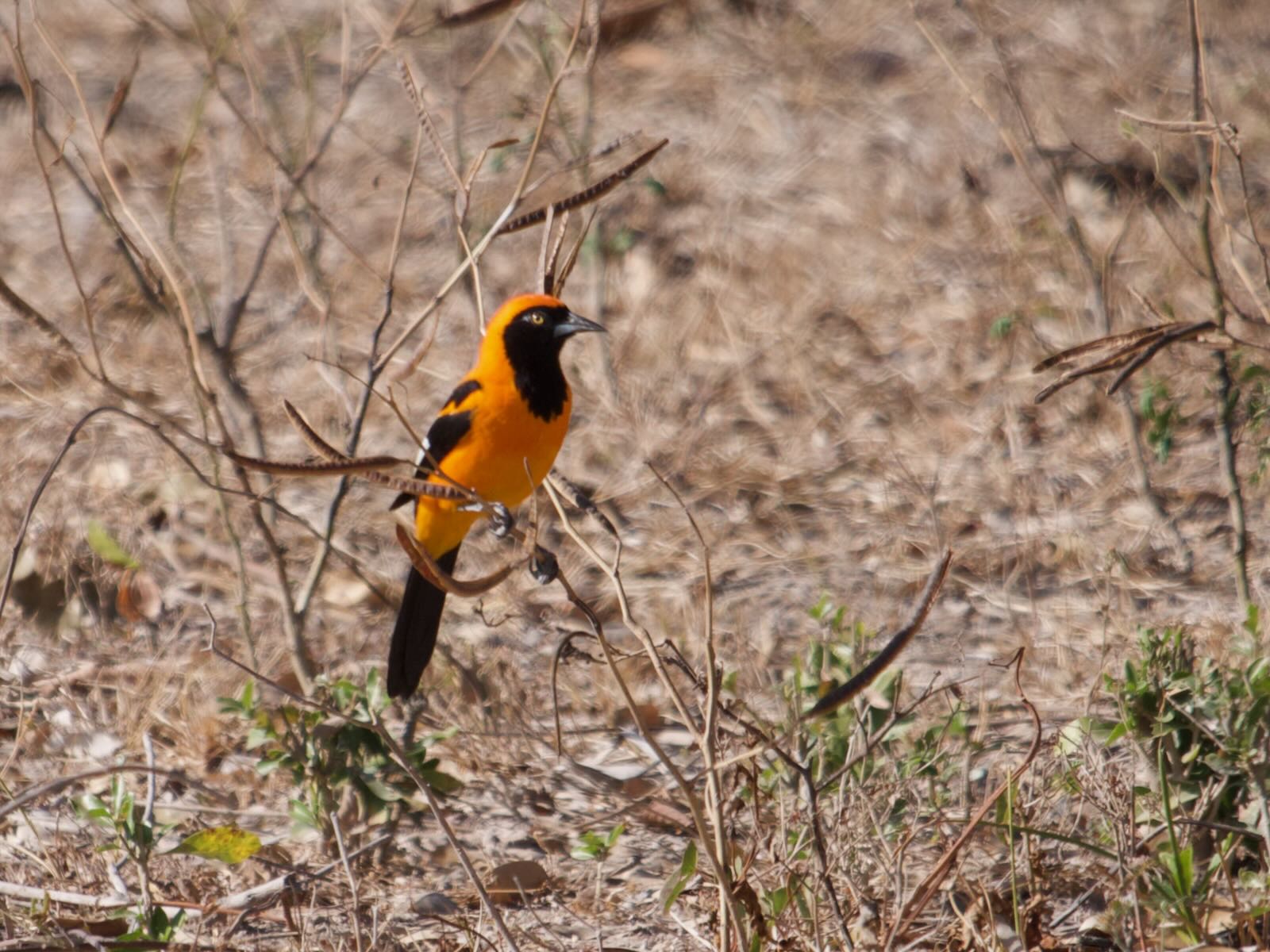
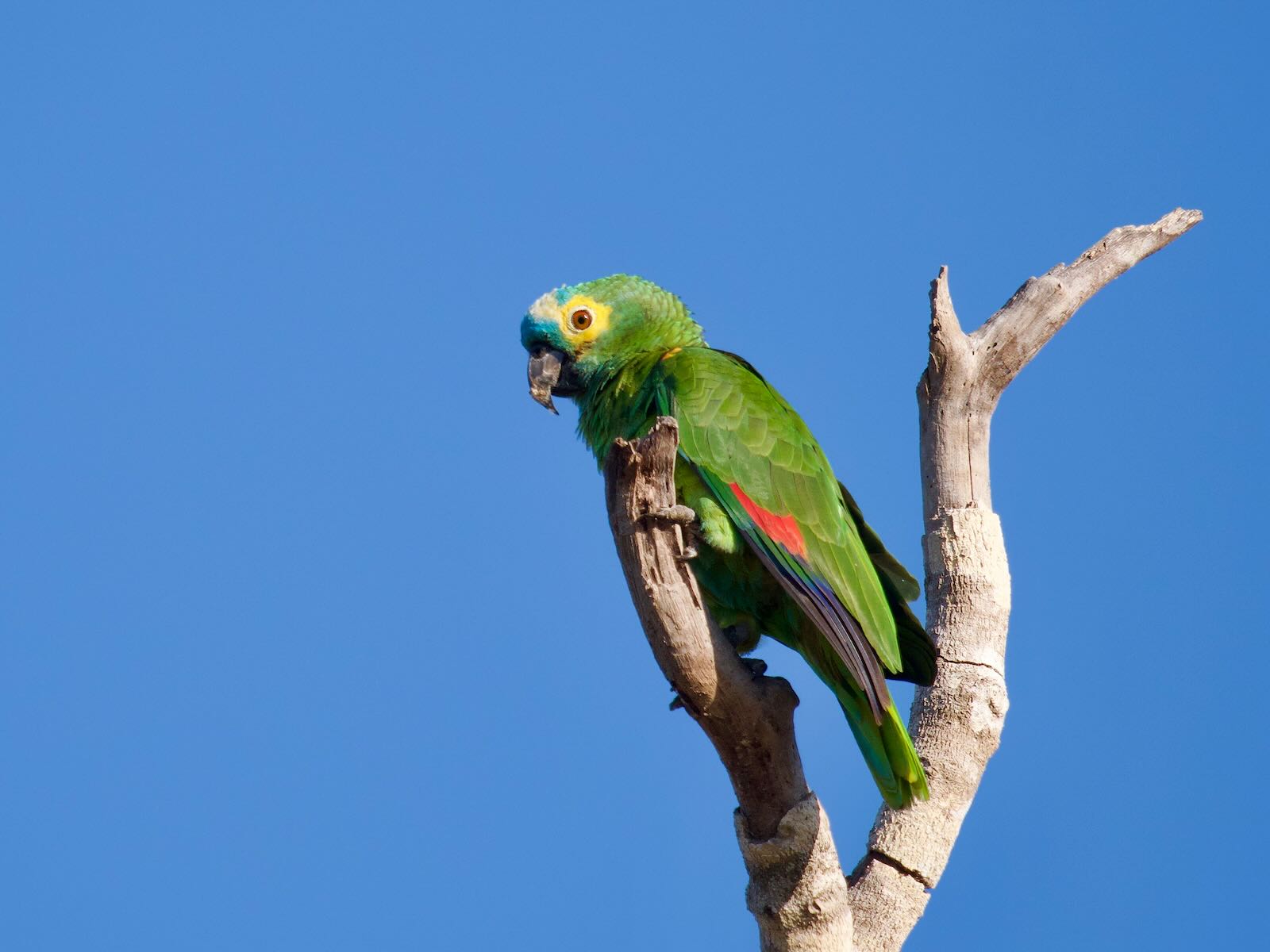
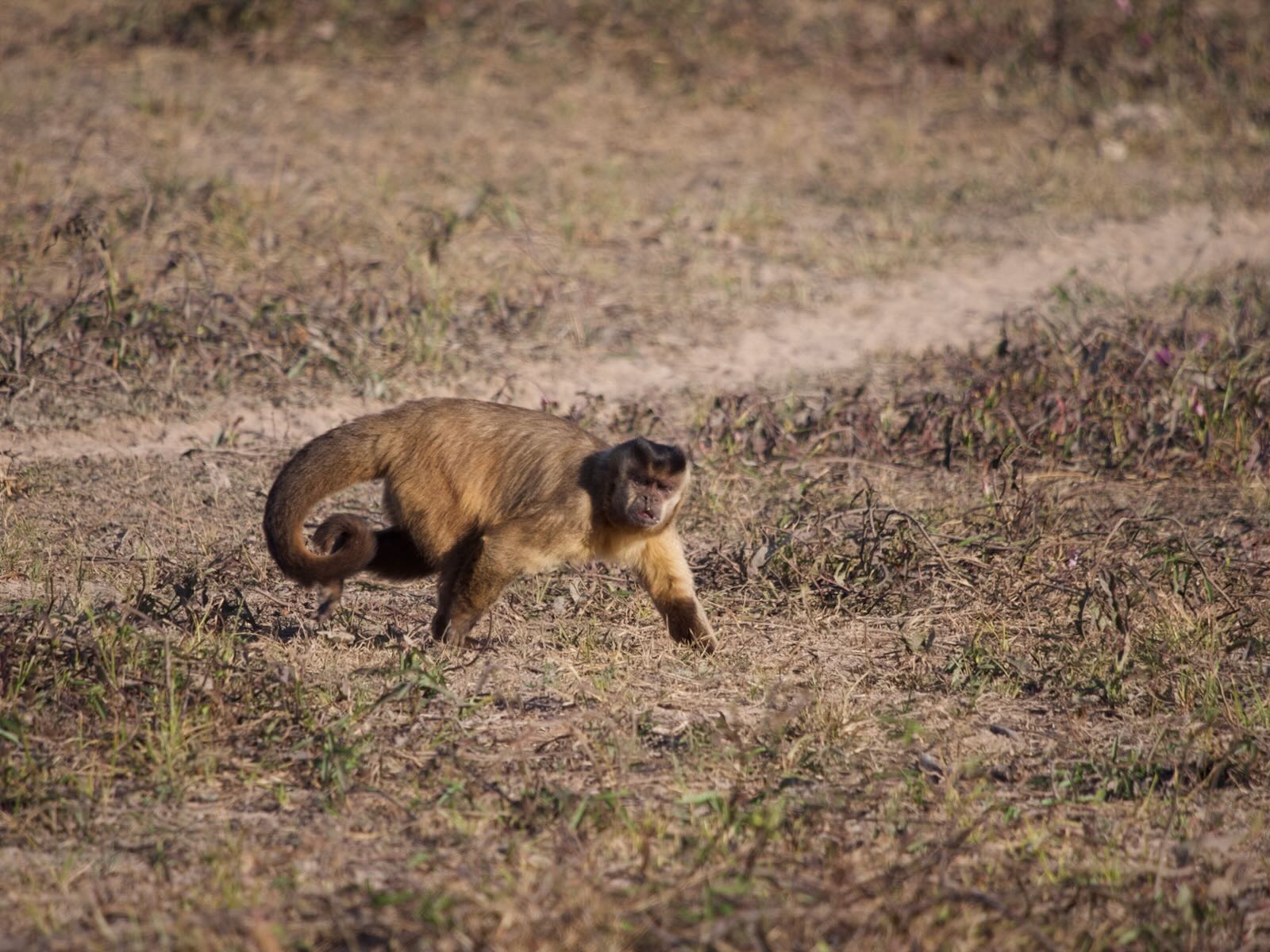
The grassy fields were veritably festooned with termite mounds. Nathalie told us that some people say the termite mounds look like gravestones in a cemetery.
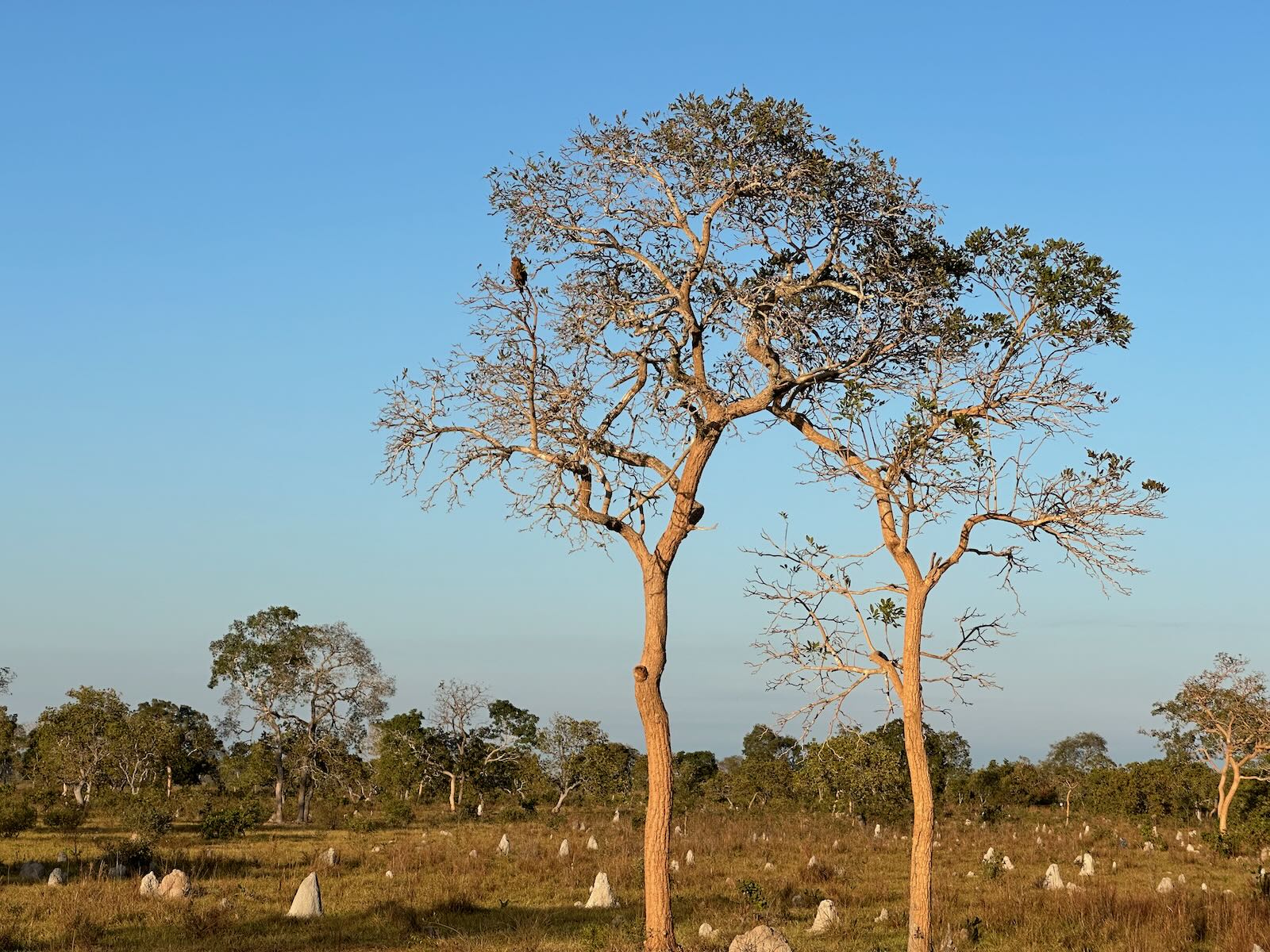
We drove slowly along these fields as the sun fell, looking for the sorts of animals that might enjoy a tasty termite snack. Nathalie spotted a suspicious-looking dark moving shape in the distance, and we all grabbed our binoculars and/or cameras, jumped out of the truck, and moved closer.
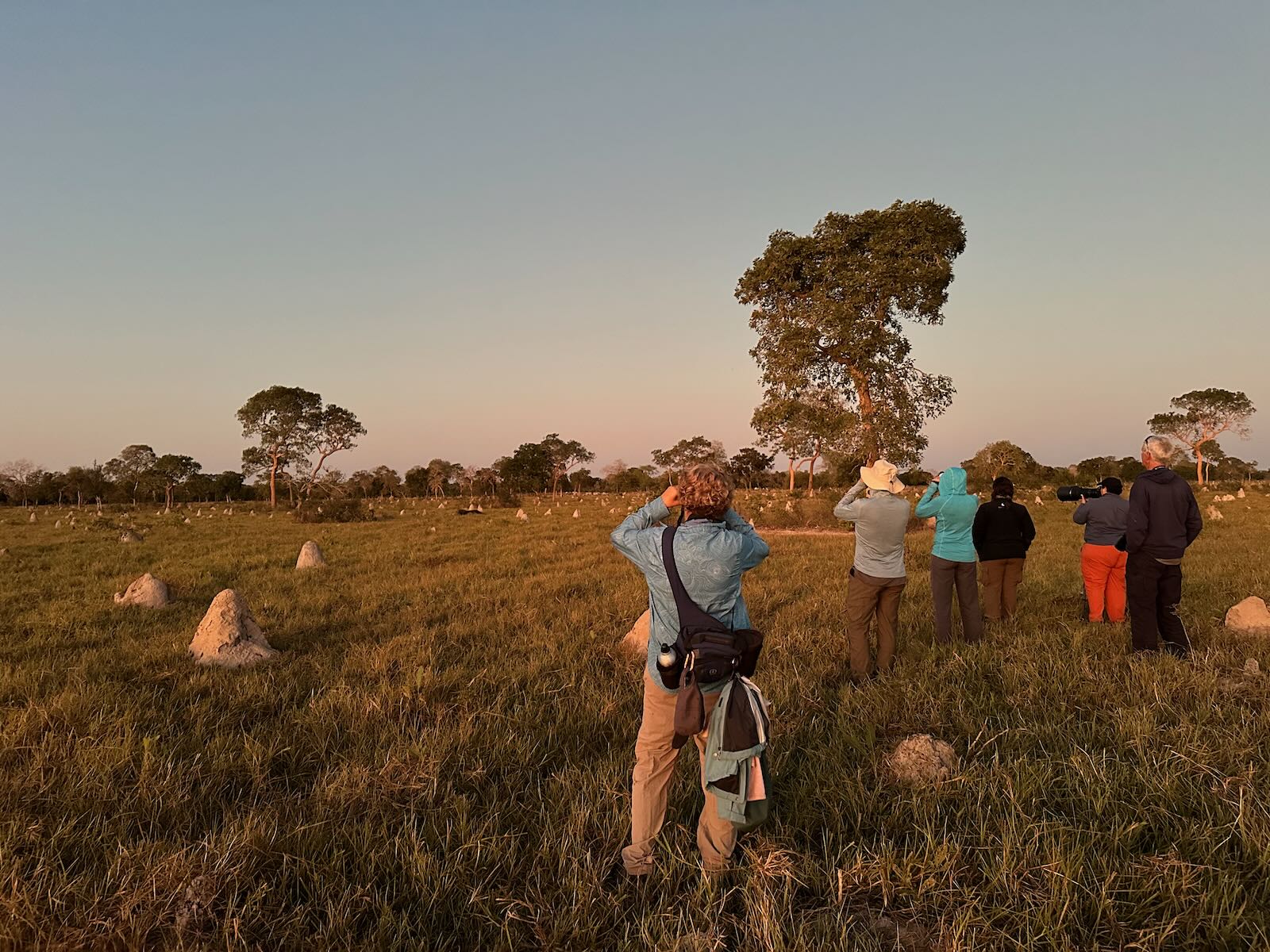
Hooray! It was indeed the animal Mary had been most hoping for.
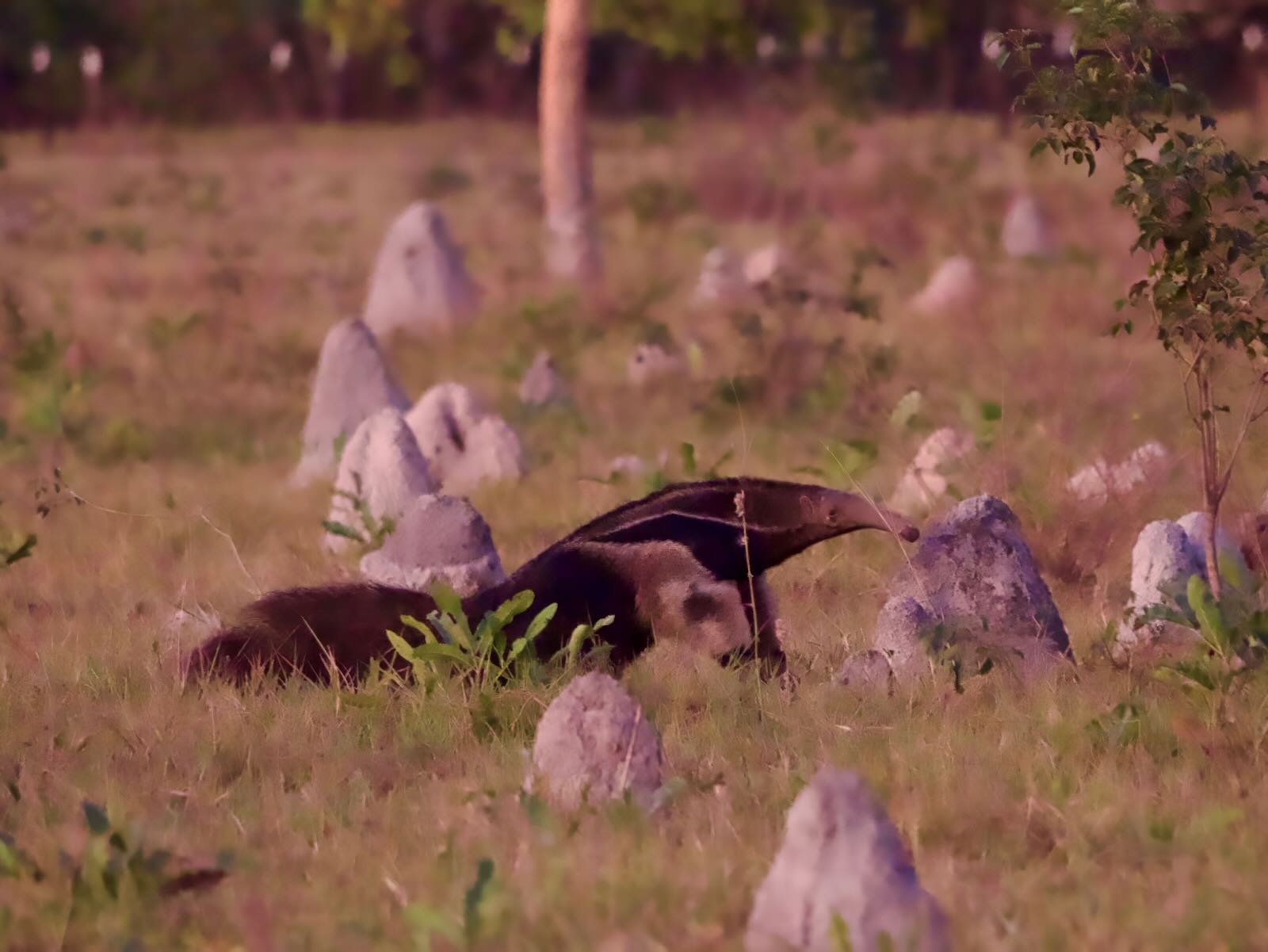
On our next morning drive, Nathalie spotted a similar but smaller distant moving shape and recognized it as a different kind of anteater. The truck looped around and pulled up thicker vegetation. This offended our new anteater friend, who stood up and tried to look terrifying, but failed because it was too cute.
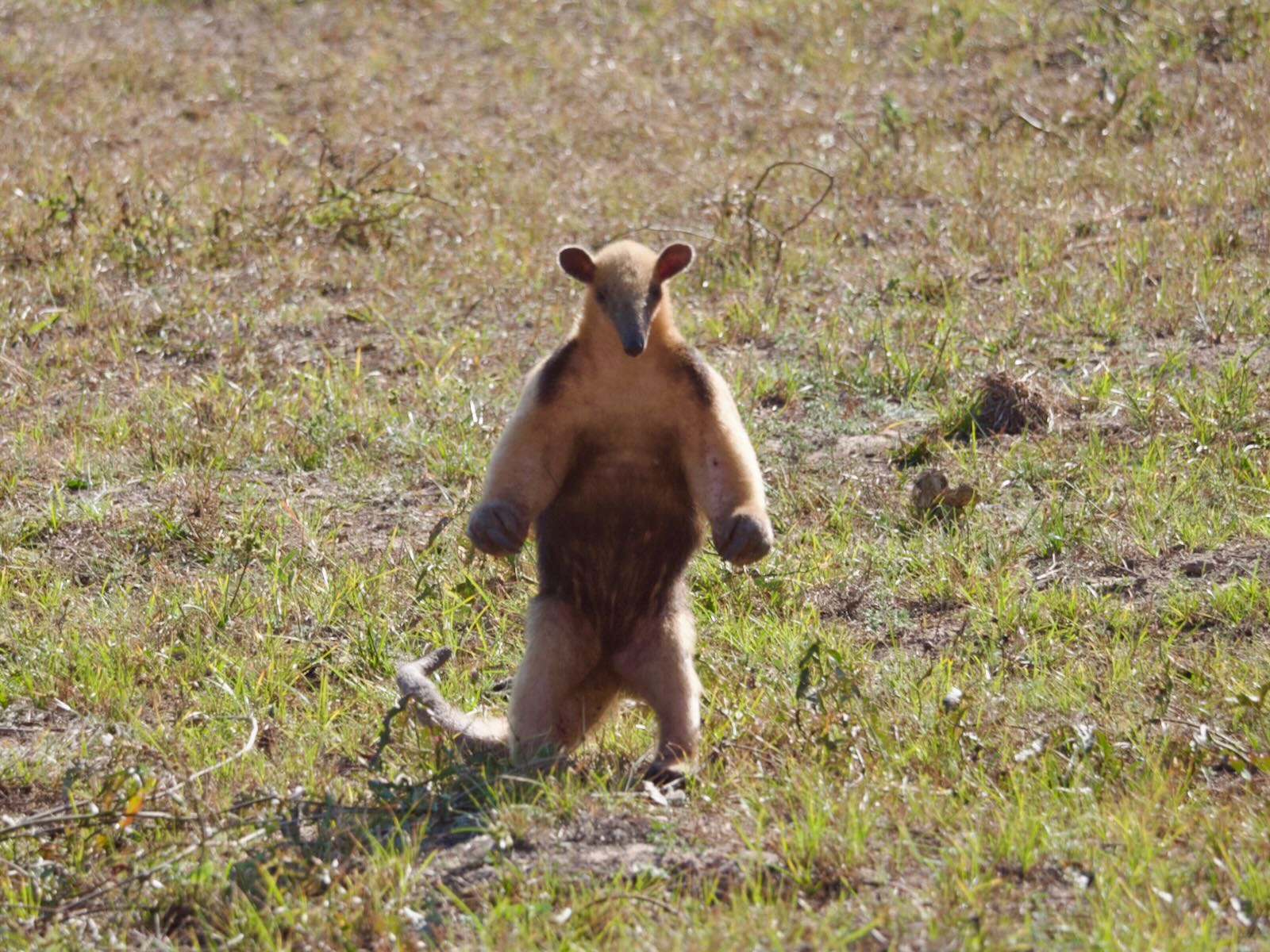
After a few moments of the superhero pose, the anteater resumed its meanderings around the field.
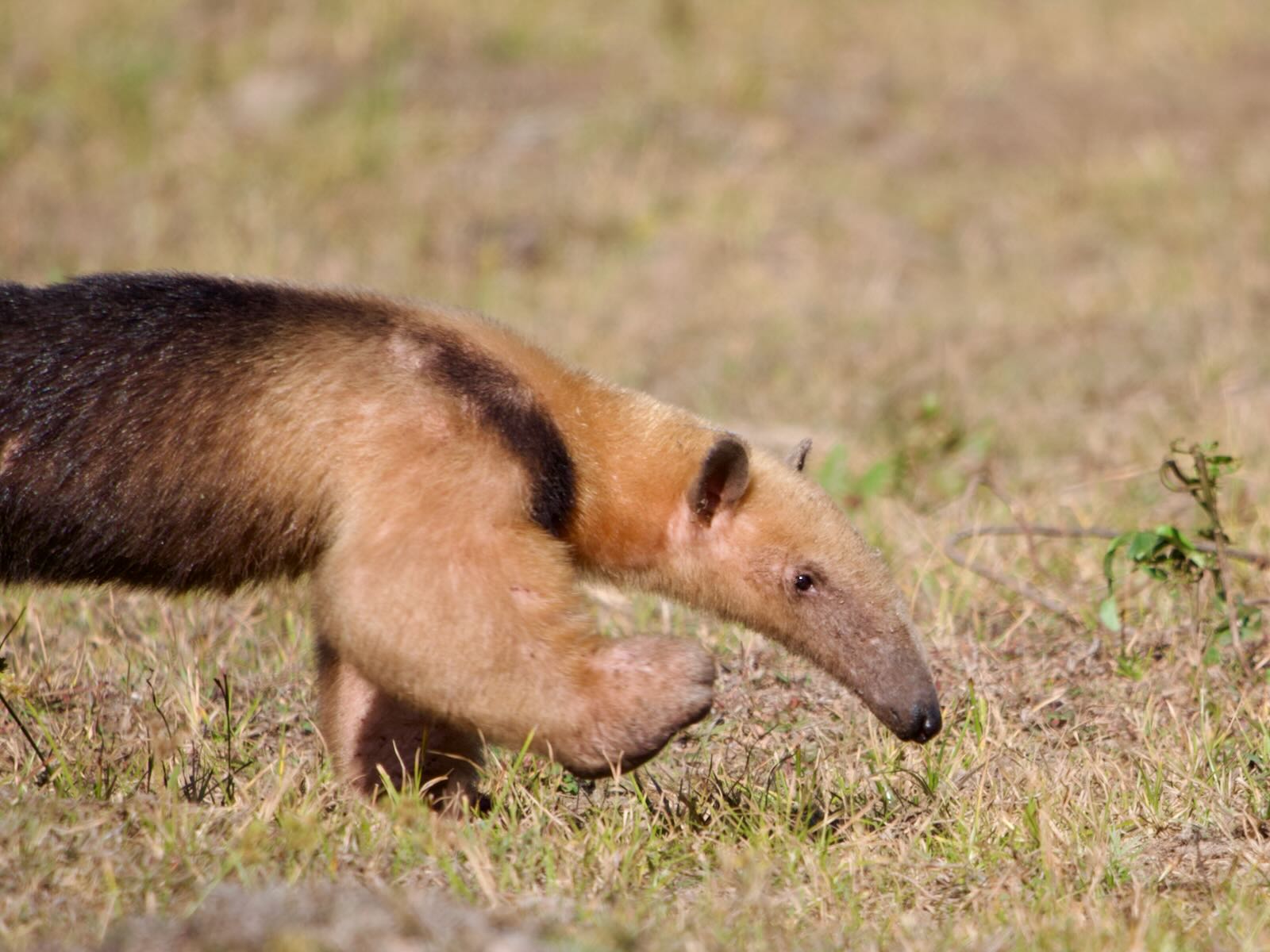
One of the most impressive creatures of the Pantanal is the Jabiru, a very large stork that is the tallest flying bird in South America.
We saw many Jabirus on our trip, including several up on their nests. This happy couple was working on making something to put into the nest.
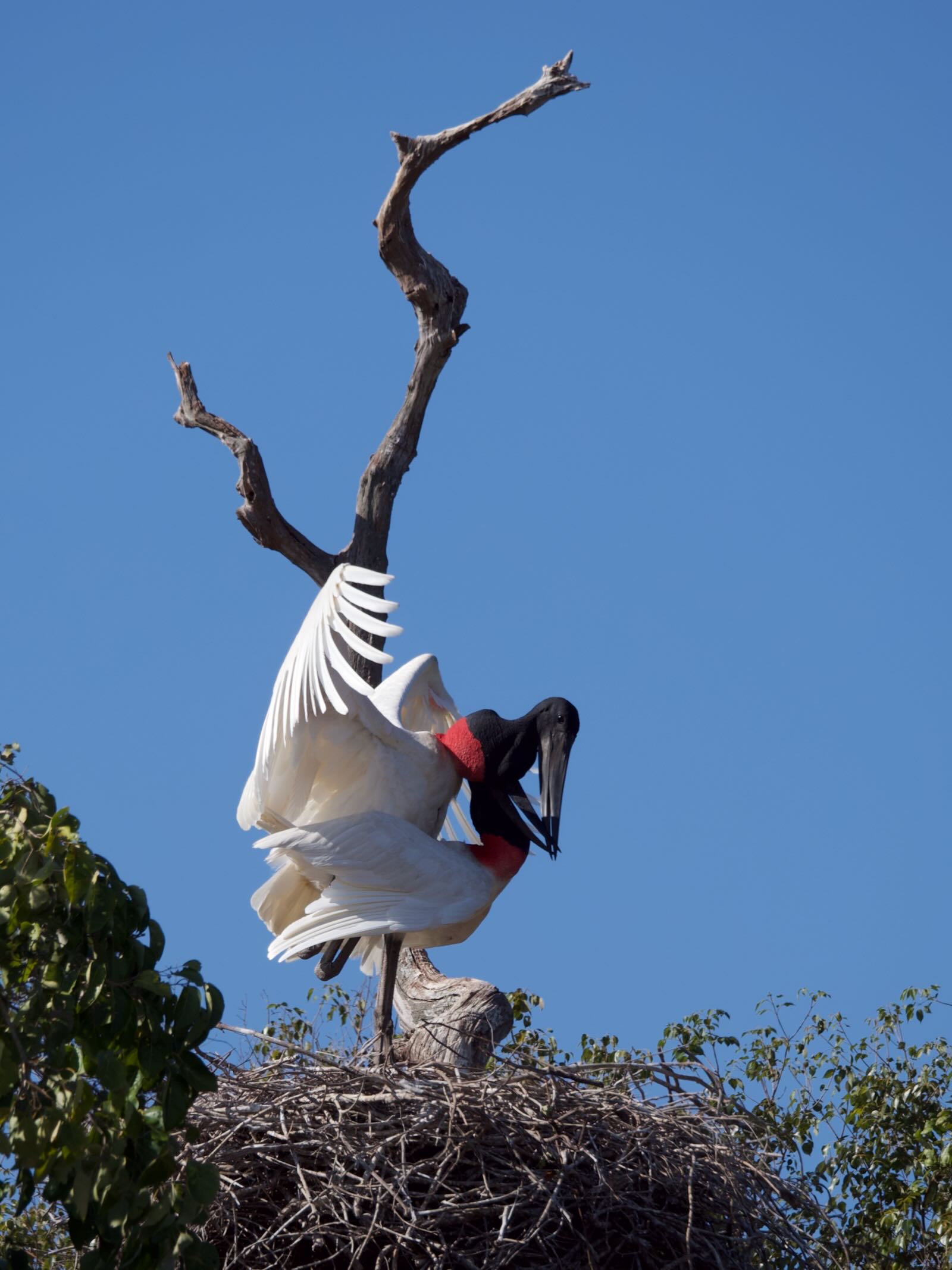
A couple of times on our morning wildlife drives we would get out and walk around for a little while, being ever mindful of staying reasonably close together in case any jaguars should happen to be near. Nathalie didn't tell us in advance why we walked around in any particular place, but of course she knew.
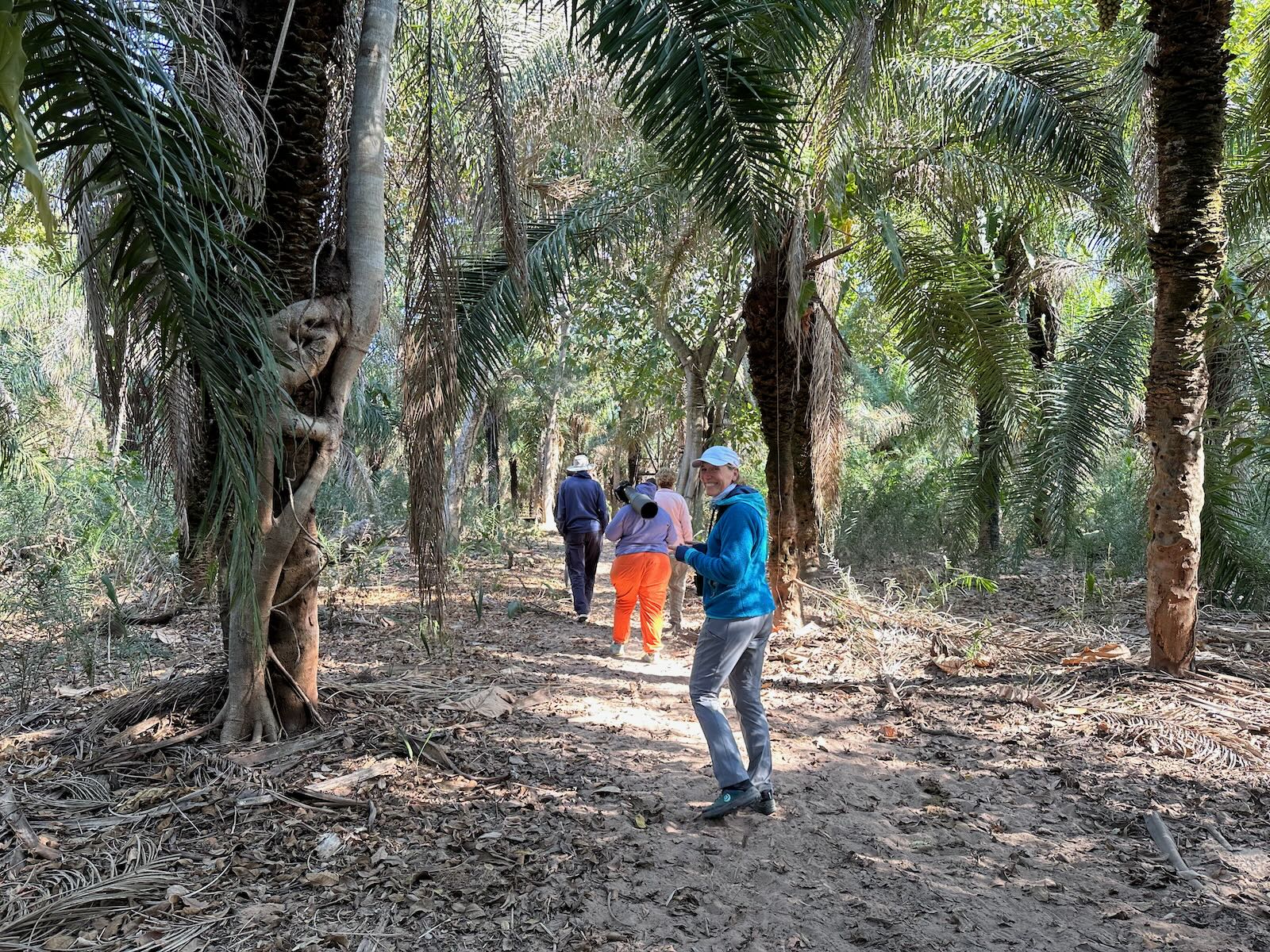
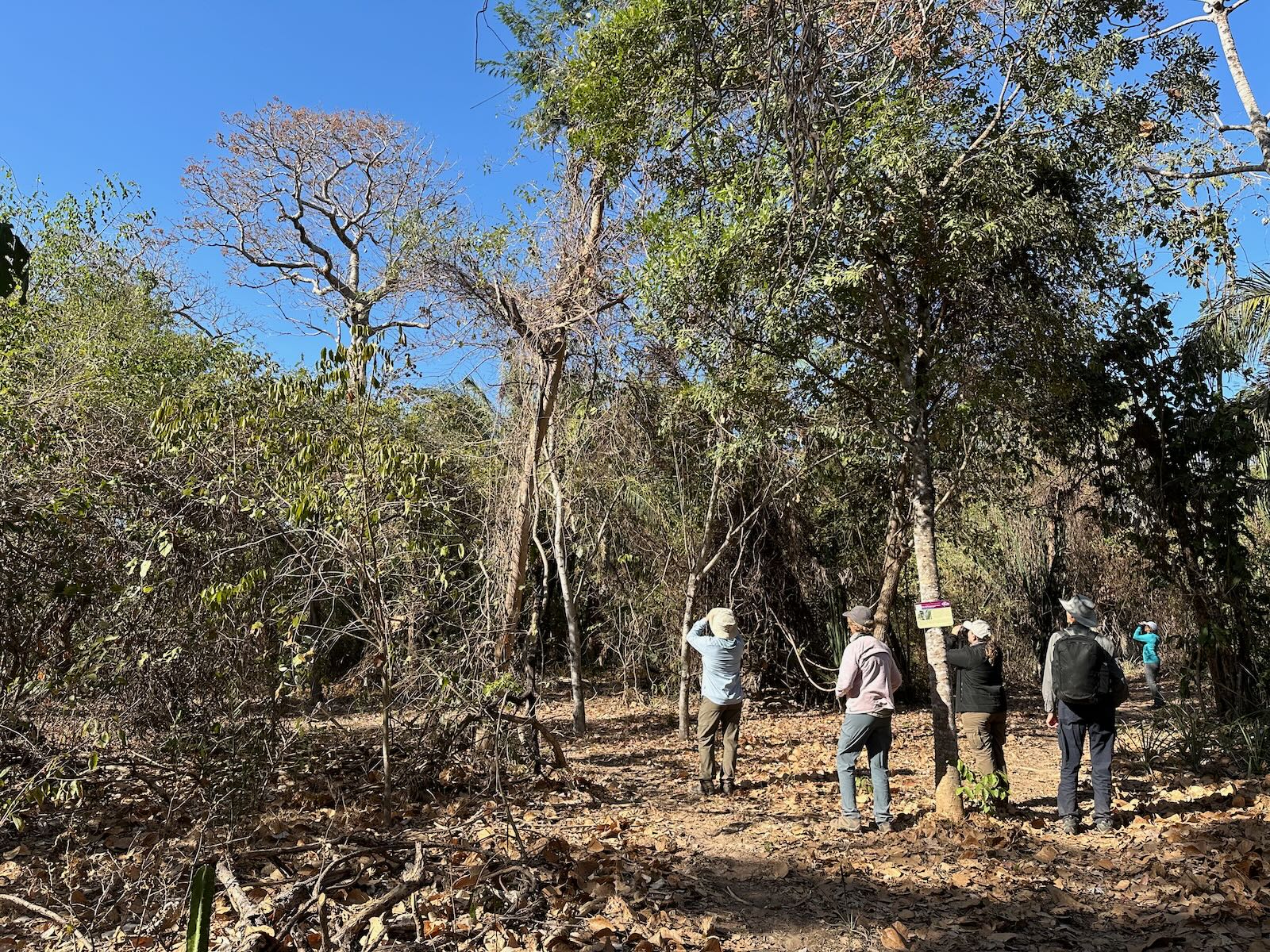
It's only the largest of all the world's flying parrots, the beautiful Hyacinth Macaw! (New Zealand's flightless Kakapo is heavier but shorter.)
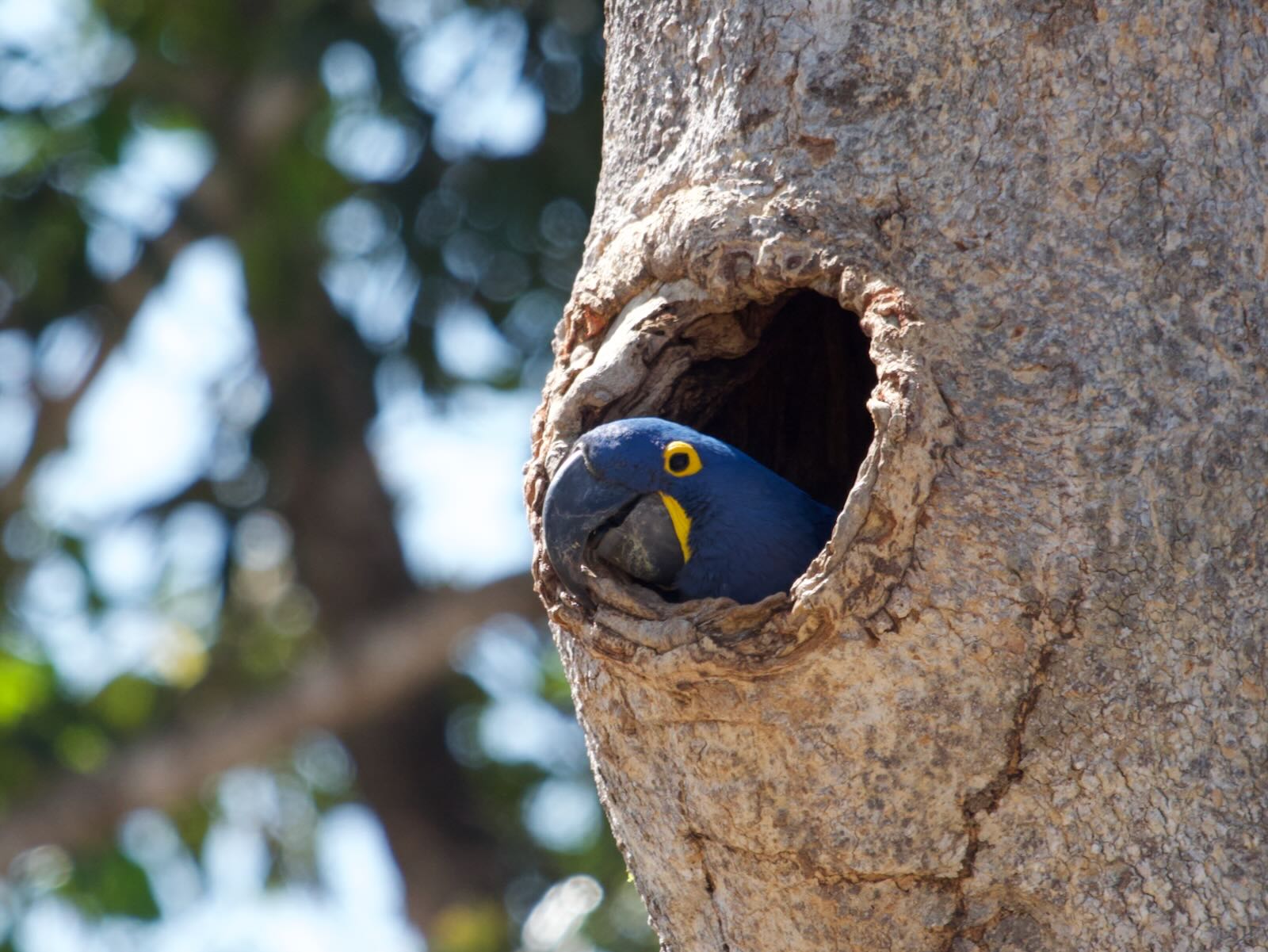
We ended up seeing a bunch of these fantastic birds in various places, maybe twenty or so overall.
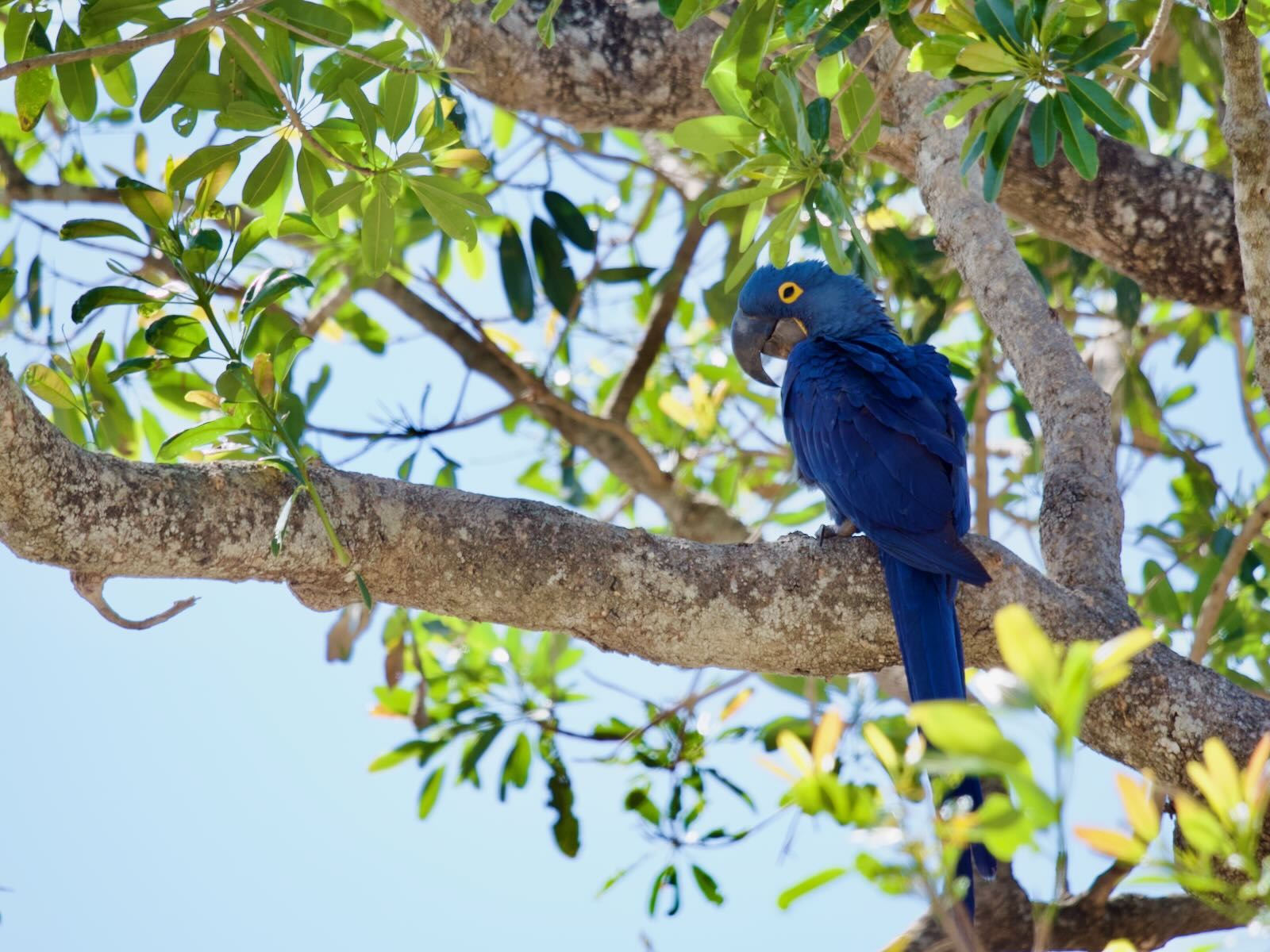
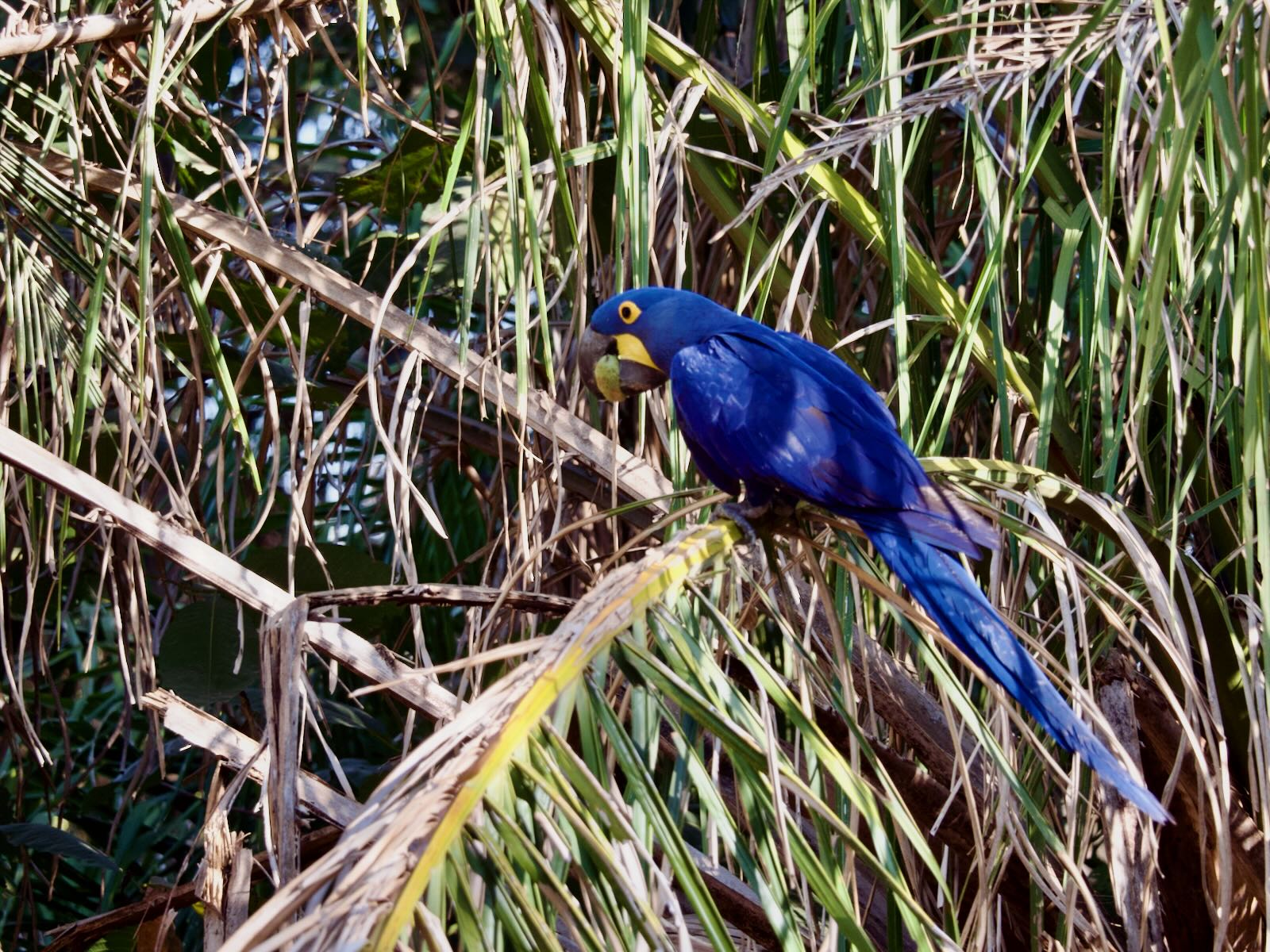
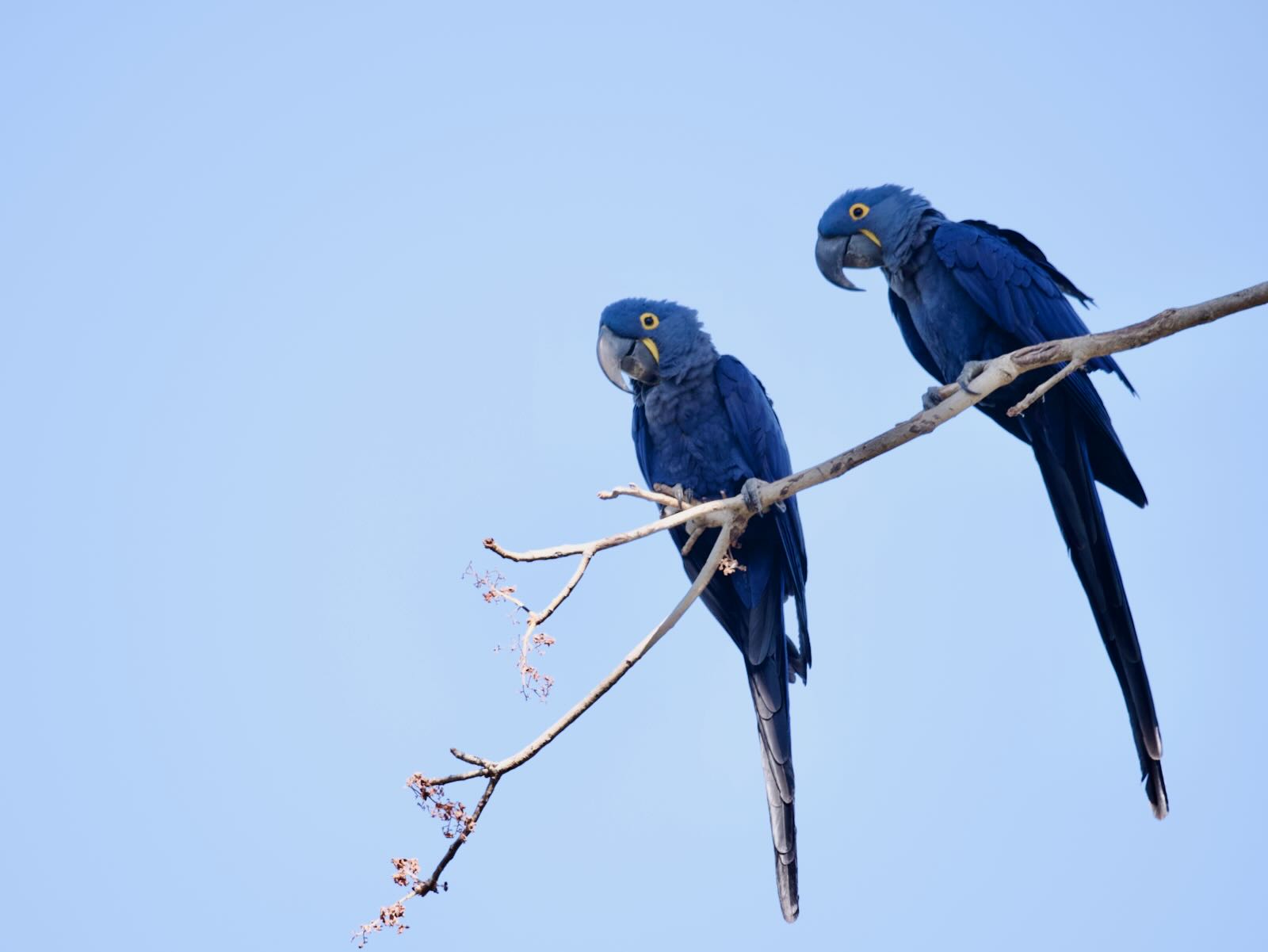
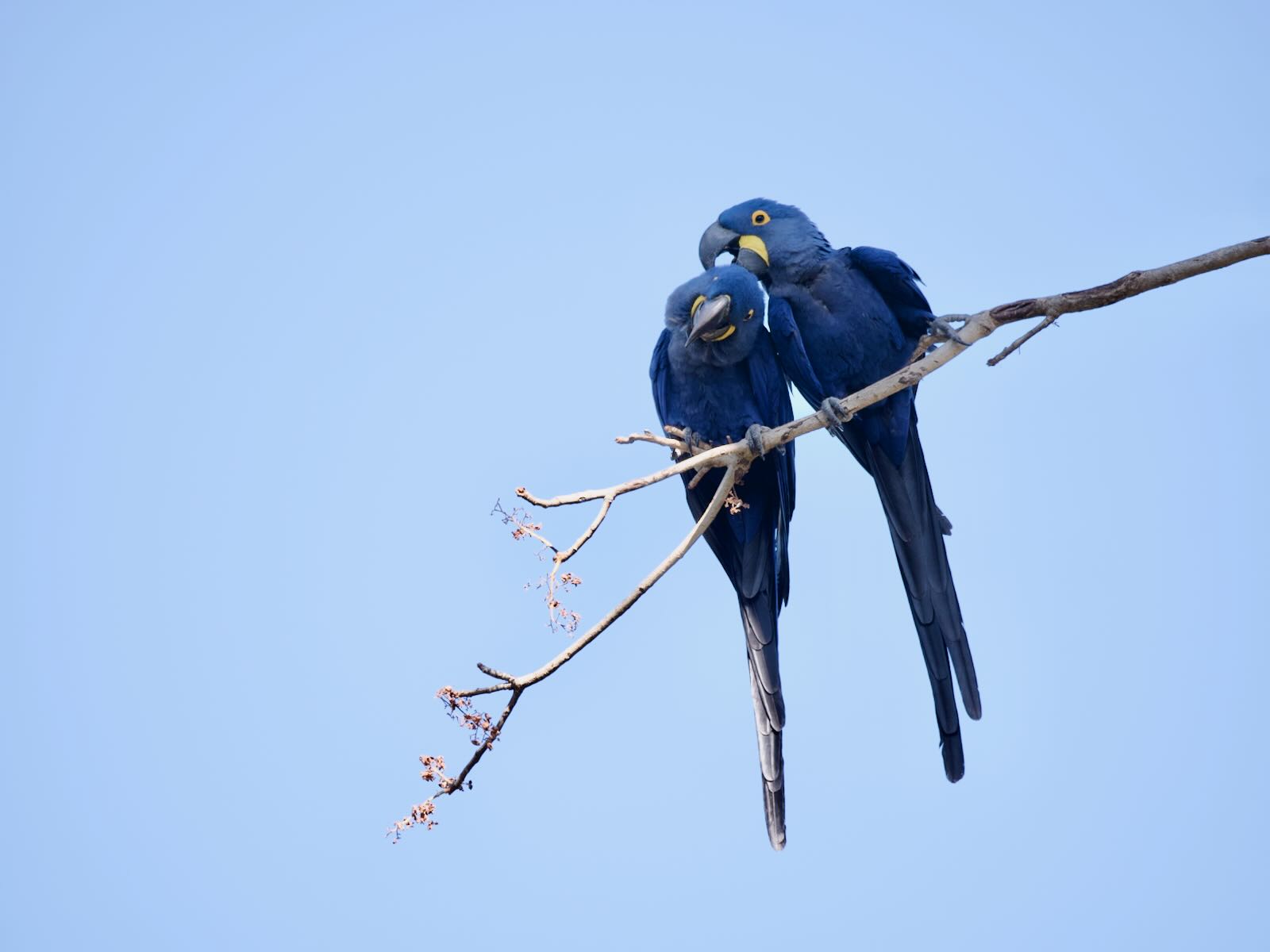
This pile of shells around a post was a mystery to us, but not to Nathalie. A Snail Kite enjoys grabbing a snail from a pond and then perching on a nearby snag or post while it uses its curved bill to extract the tasty snack. Then it drops the shell and looks for another. They often reuse their perching spots, leading to these piles o' shells.
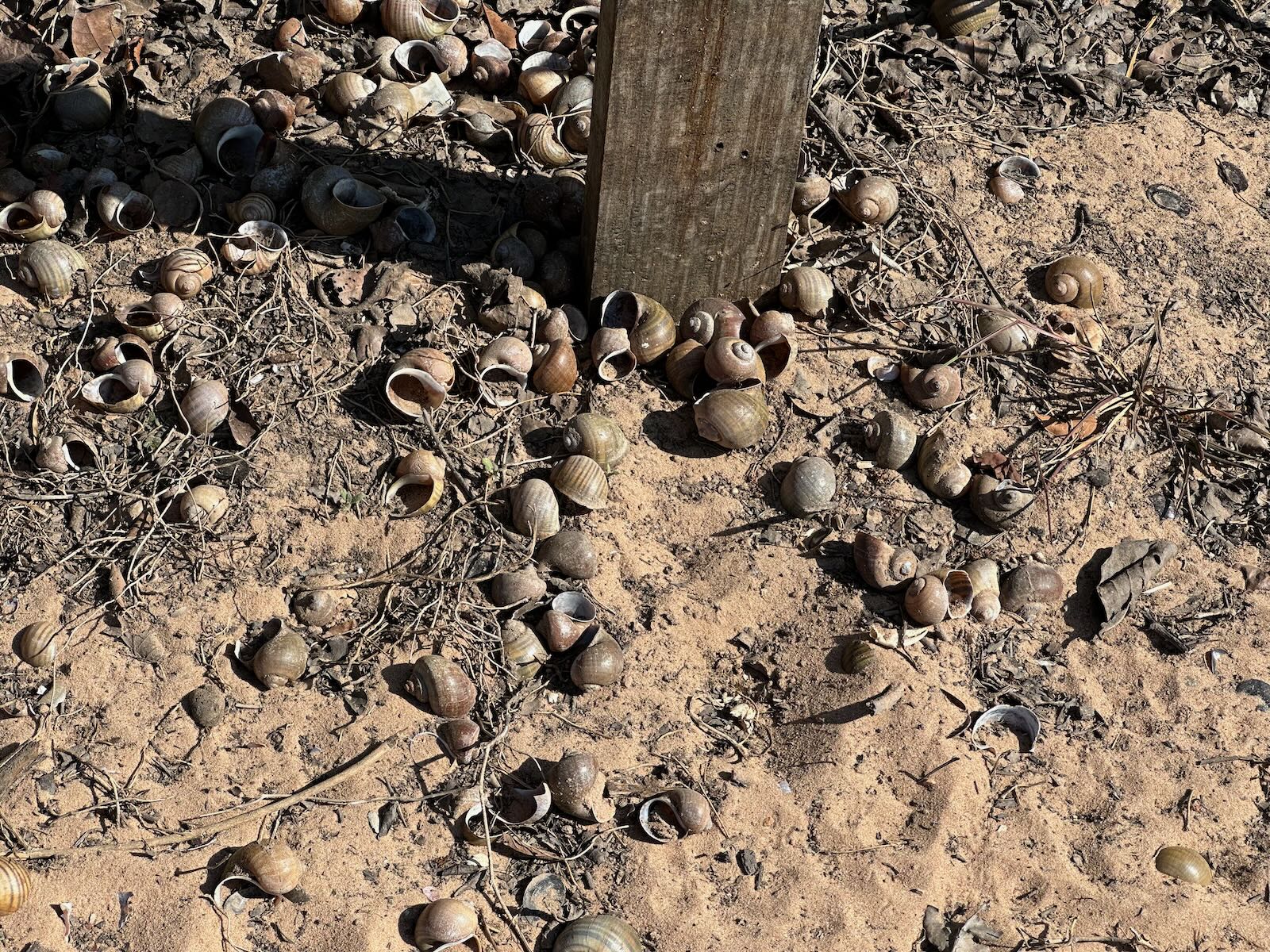
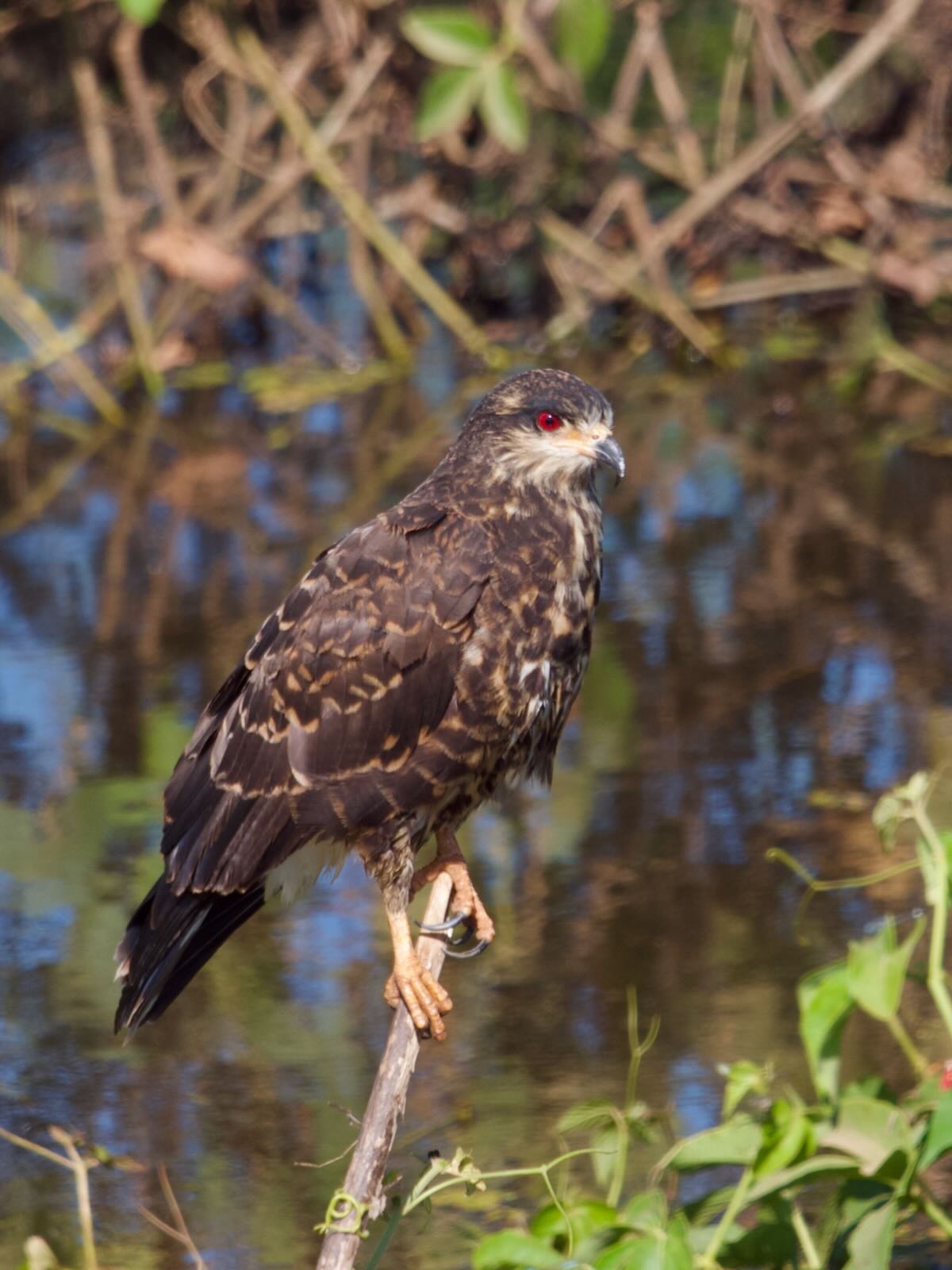
We had a few brief looks at miscellaneous Pantanal mammals that weren't anteaters or Capybaras.
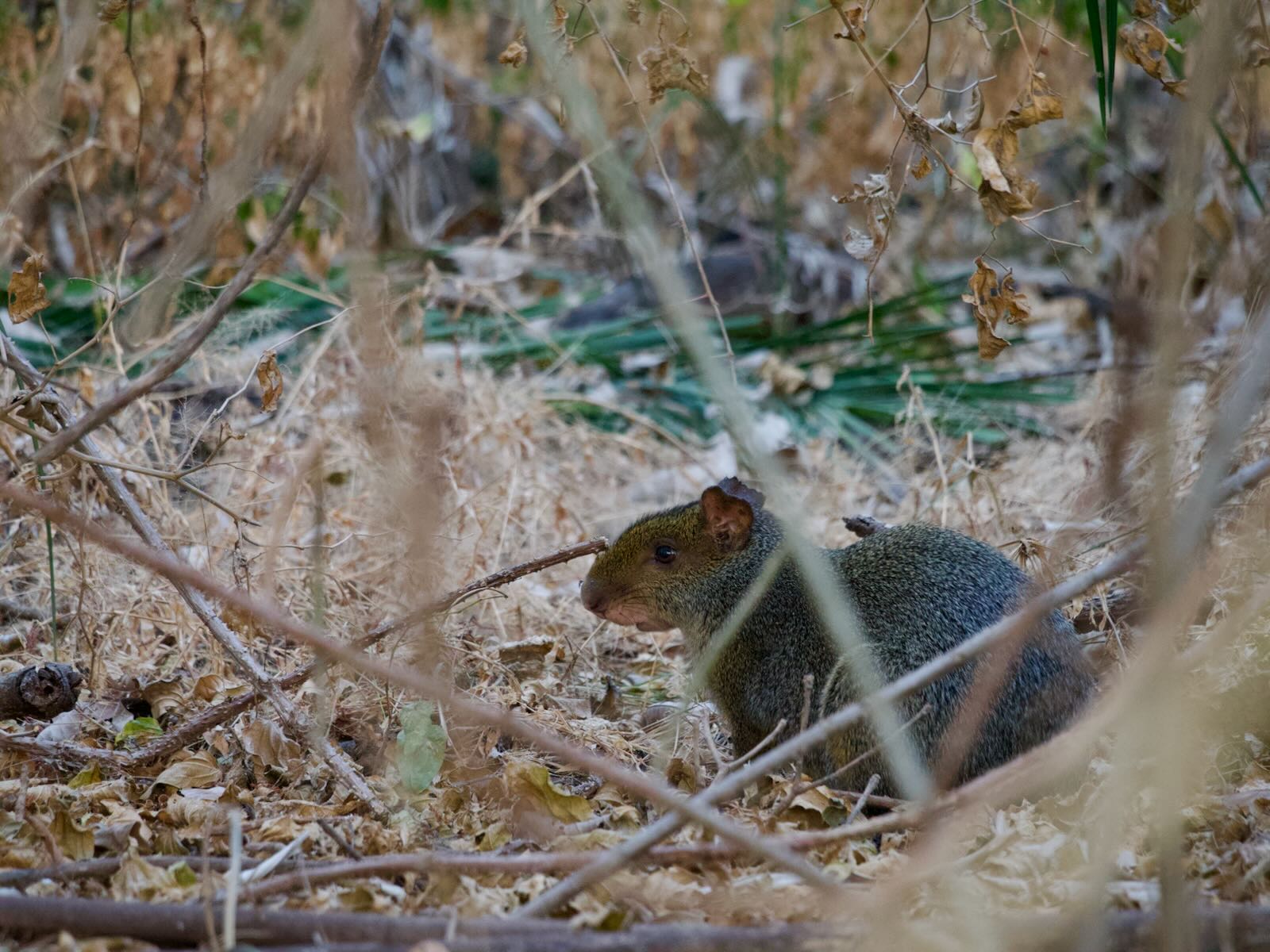
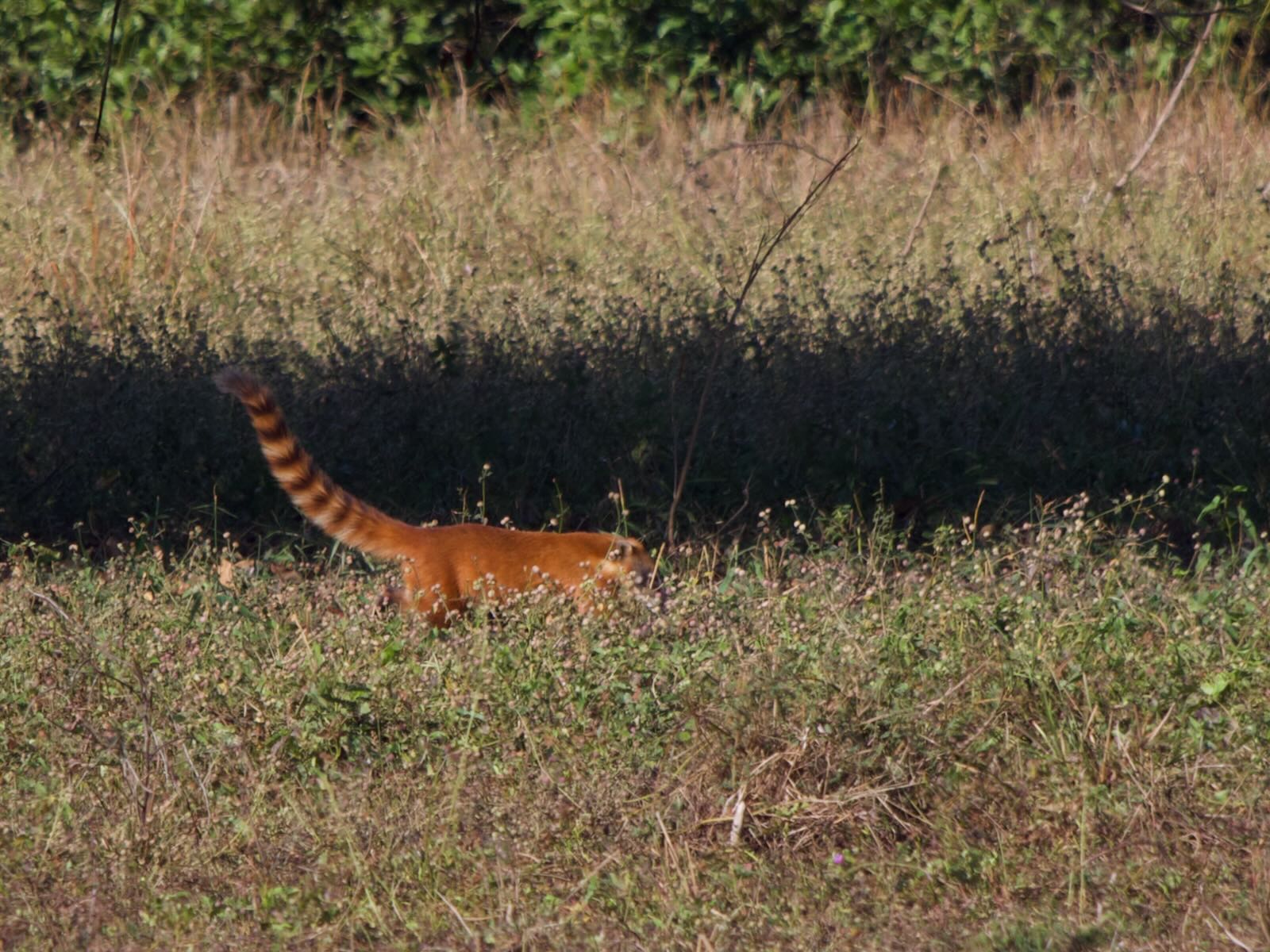
The local capuchin monkeys that we had earlier seen crossing a grassy field were more typically up in trees, munching on leaves or goofing around or resting.
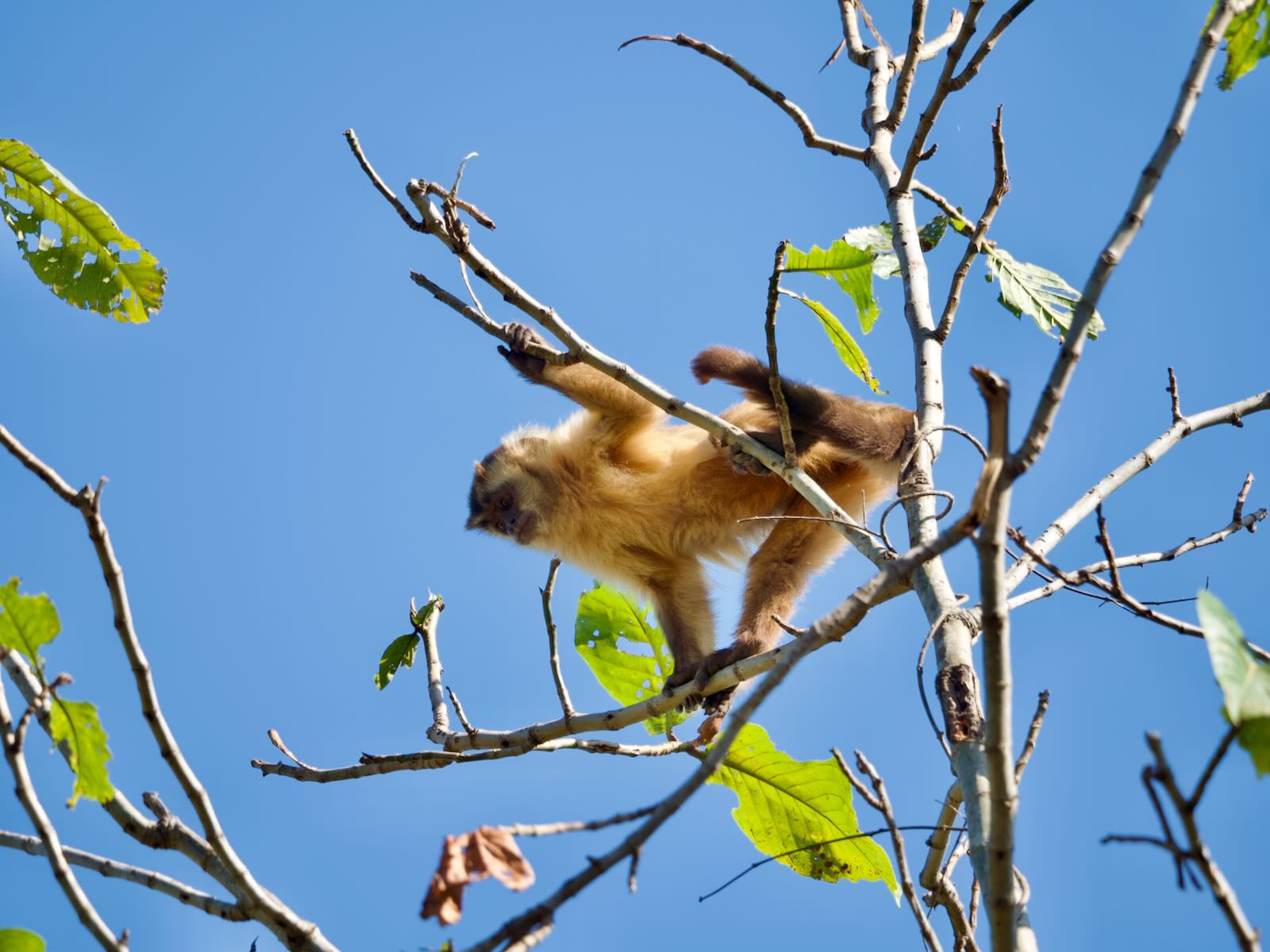
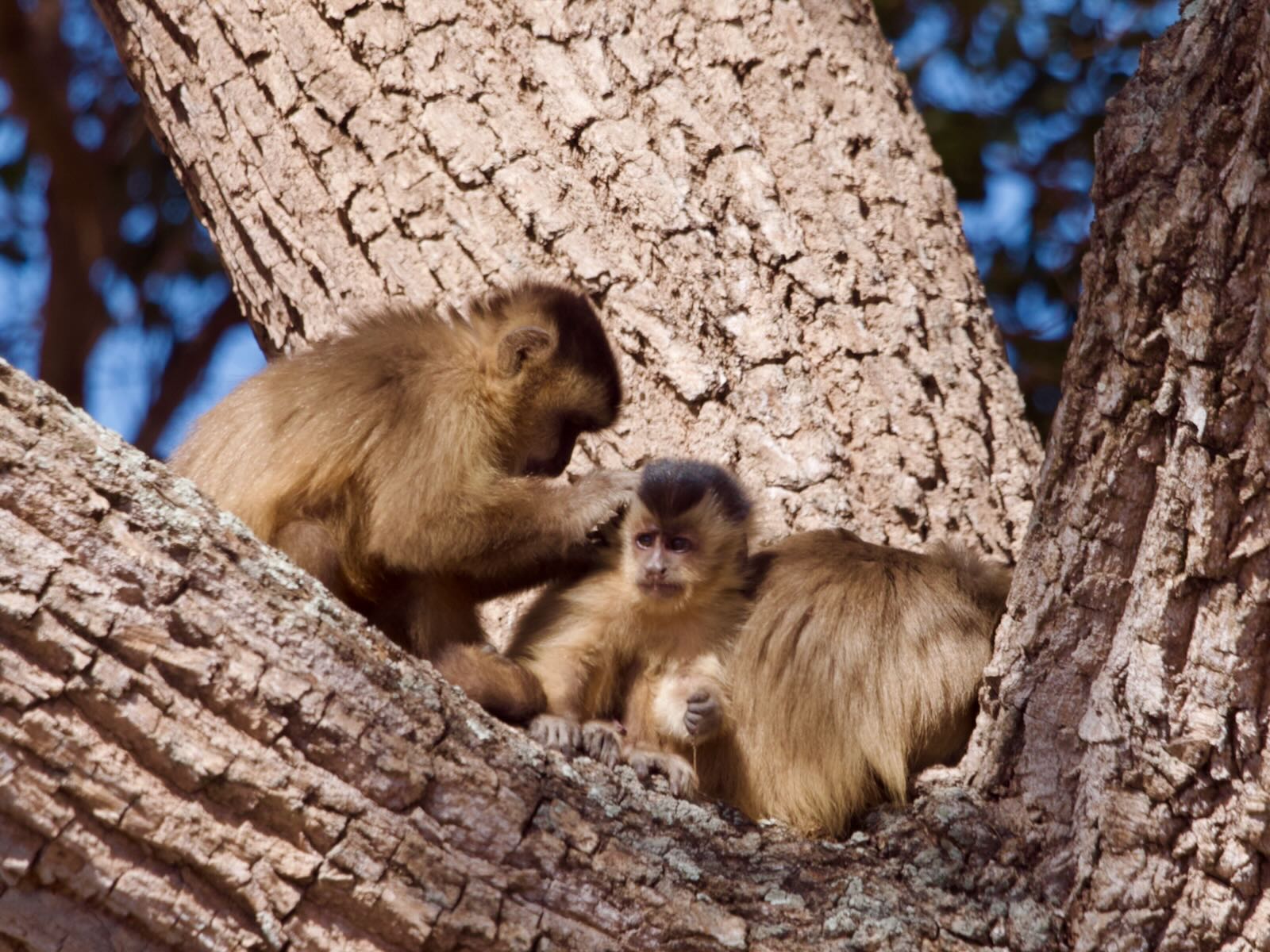
As well as being an ecotourist destination, the ranch made money from standard ranch-type things . For example, they bred and sold Pantaneiro horses such as these, which are descendants of Iberian horses first introduced to the region in the 16th century. These horses have thick hooves that can stay submerged for long periods without rotting, and can graze with their noses underwater, both critical traits in a seasonally flooded land.
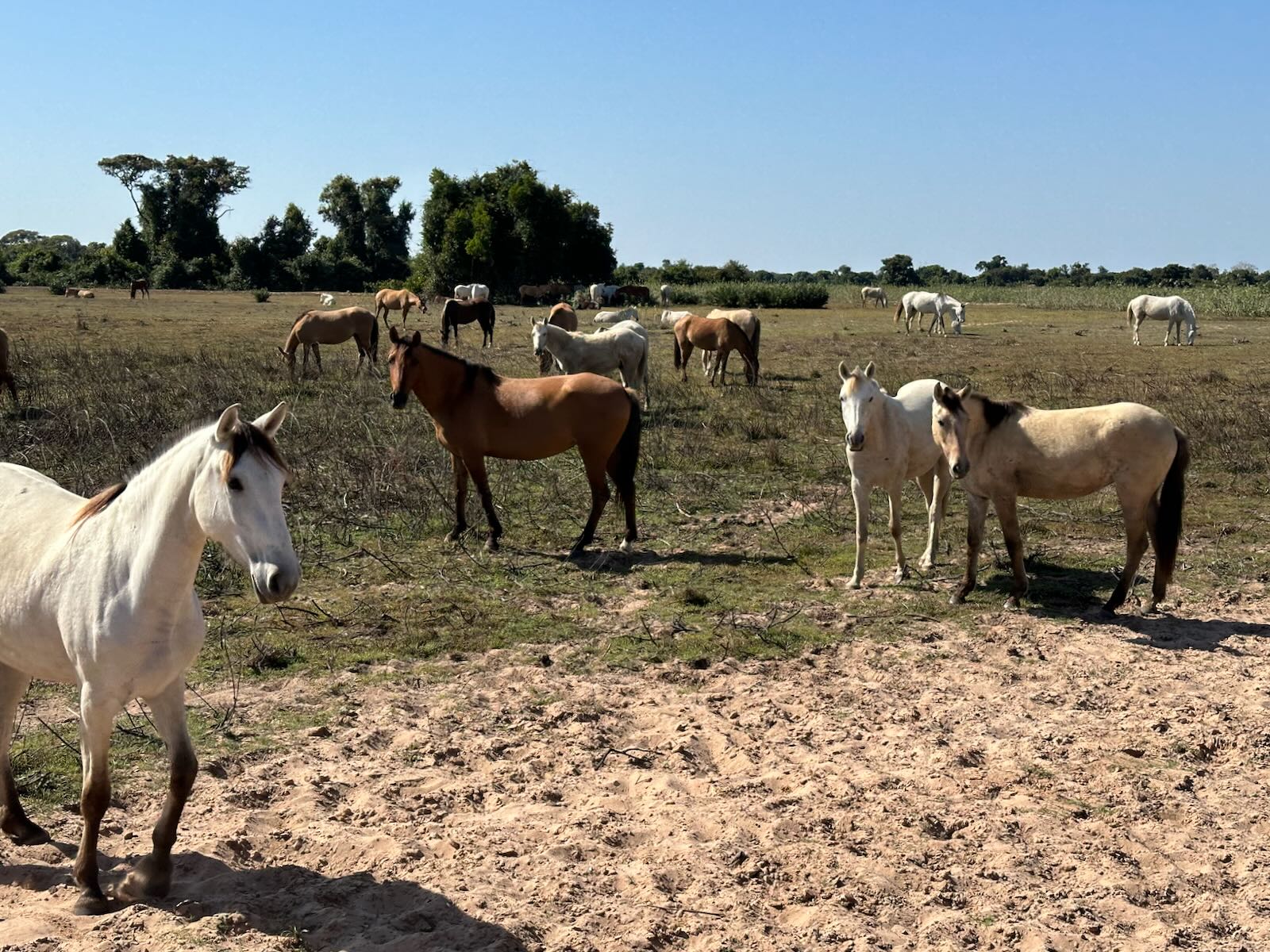
The ranch also bred and sold cattle. That's problematic in the Pantanal, because jaguars are always nearby, and they will prey on young calves. To mitigate this problem, each night at this ranch the calves and expectant cows are herded into a corral that's surrounded by an electrified fence. The fence is just three or four strands of wire, but jaguars aren't built for jumping up and over things, so it deters them nicely. The calves and cows are released from the corral each morning, since the jaguars here hunt mainly at night.
At night the Capybara herd would wander back towards the lodge, under the (non-electrified) obviously-not-jaguar-proof fencing, and to their favorite watering hole. There they lined up, each facing the water, alert (or as alert as chill Capybaras can be) for any jaguars that might choose to visit the lodge. If a jaguar did come by, the Capybaras would all jump into the water and swim, making them harder to catch.
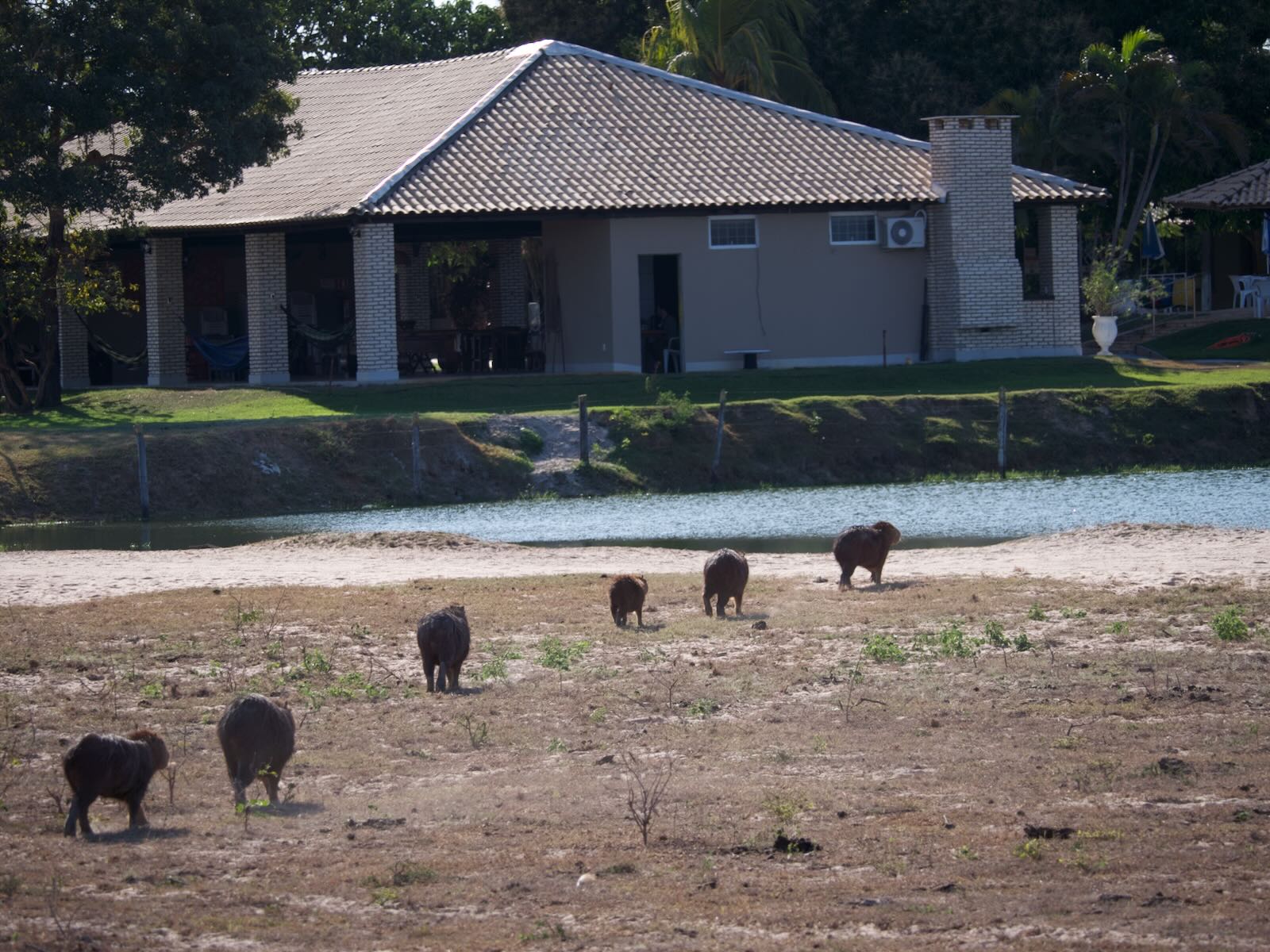
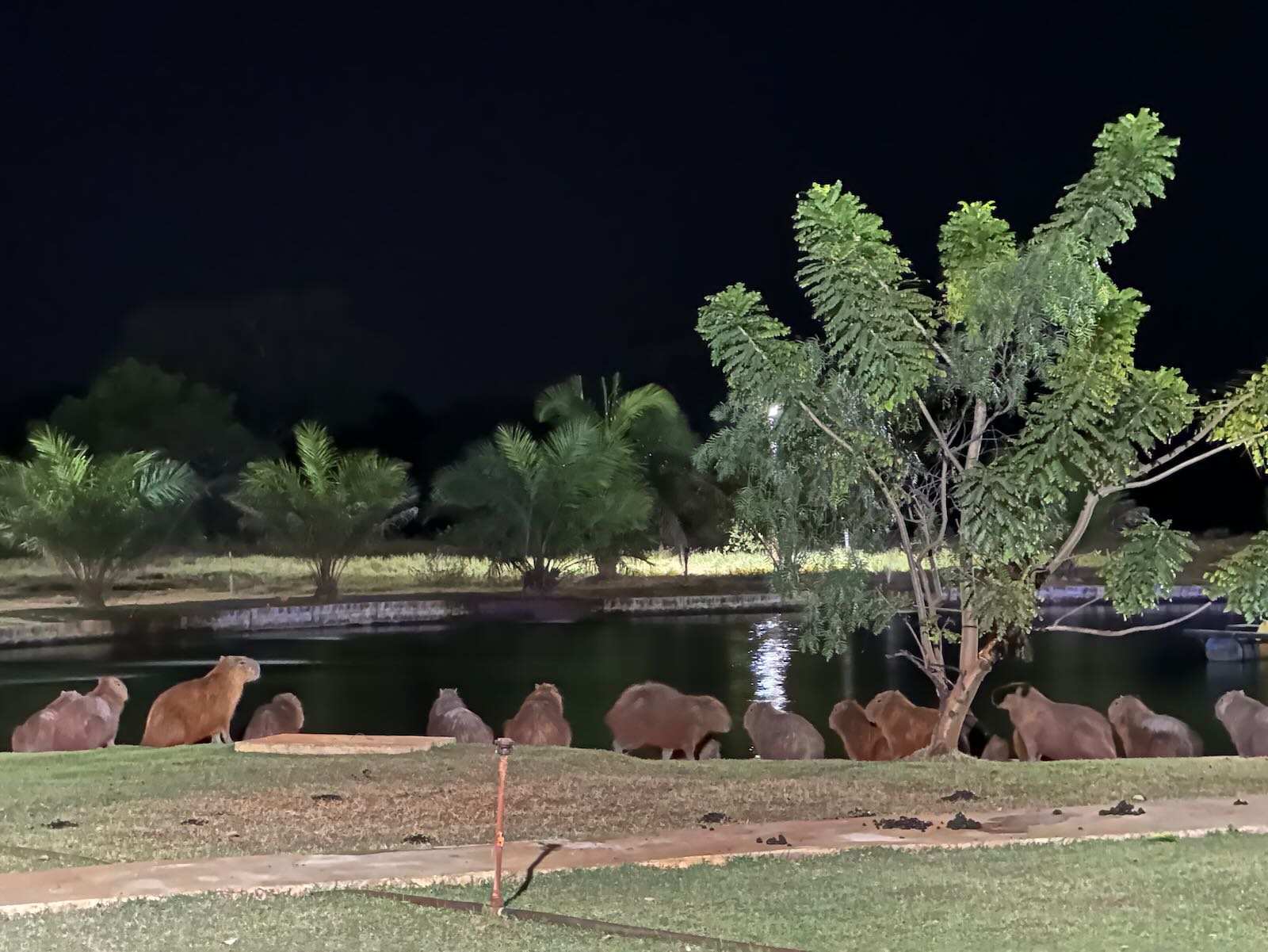
Two wild canine species live in the area. We didn't see the really exciting one, the Maned Wolf, but we were fortunate to see several Crab-eating Foxes.
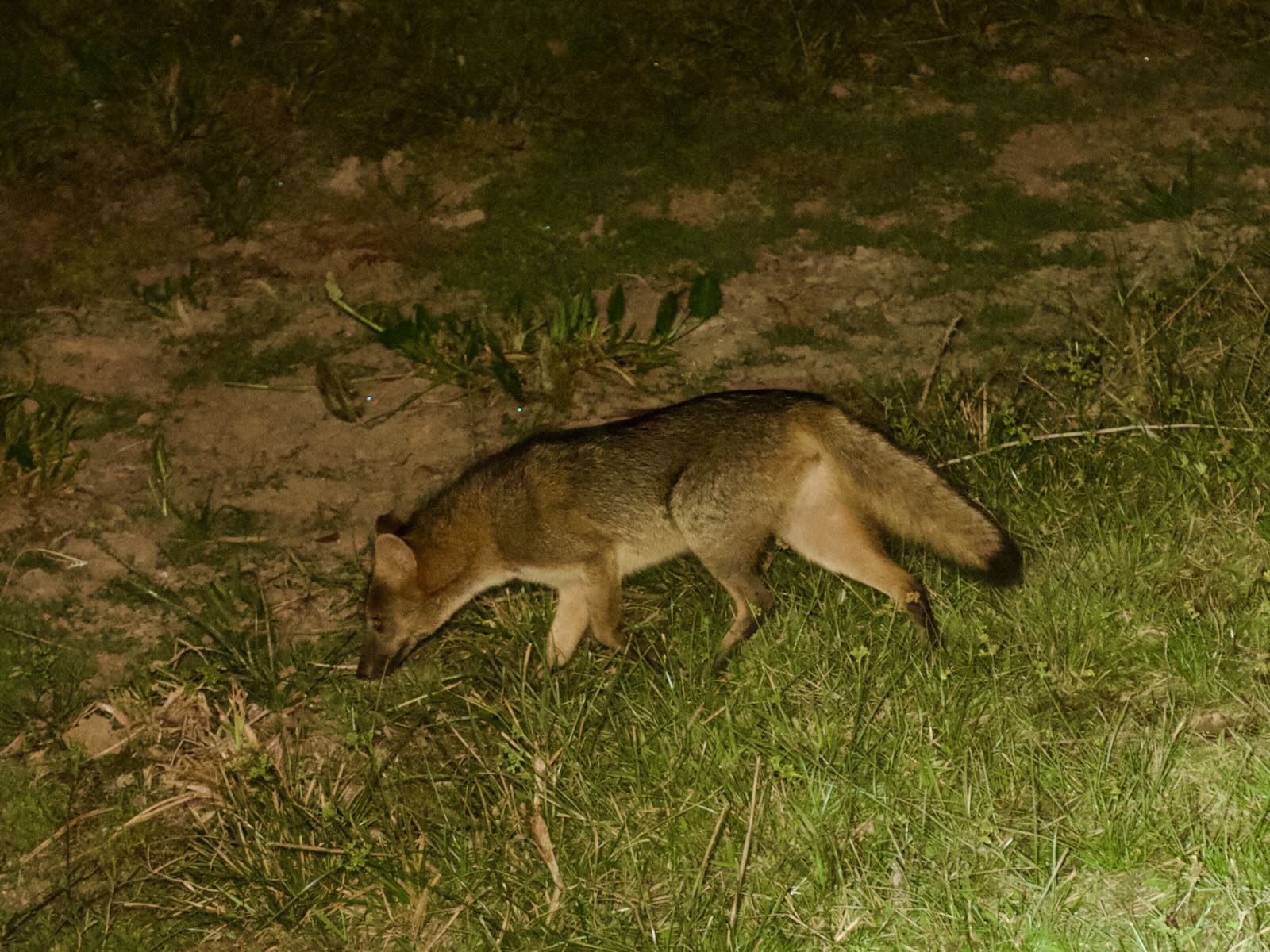
As the sun set on Piuval Lodge, we started looking forward to our next destination, known informally as Jaguar Land.
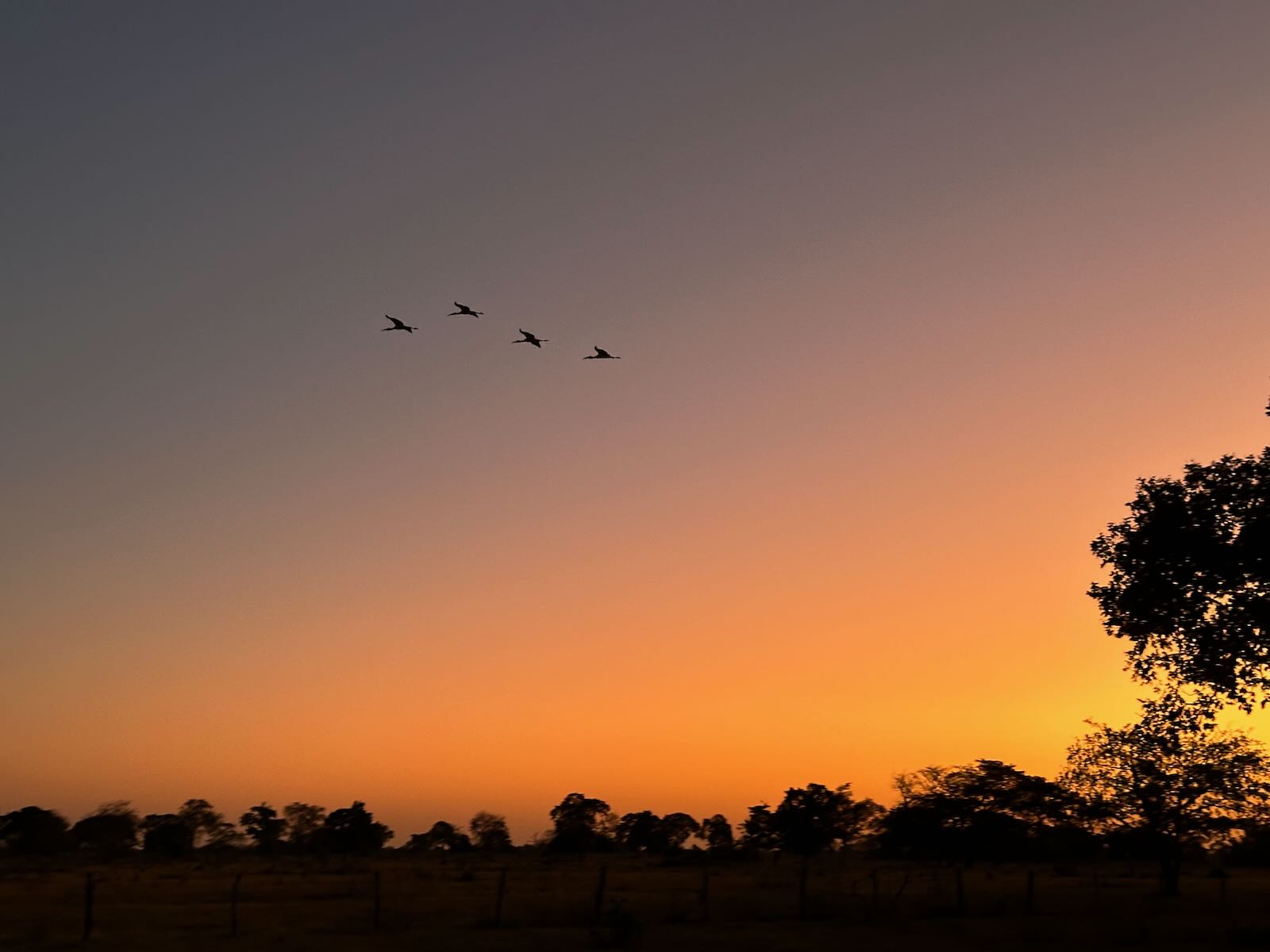
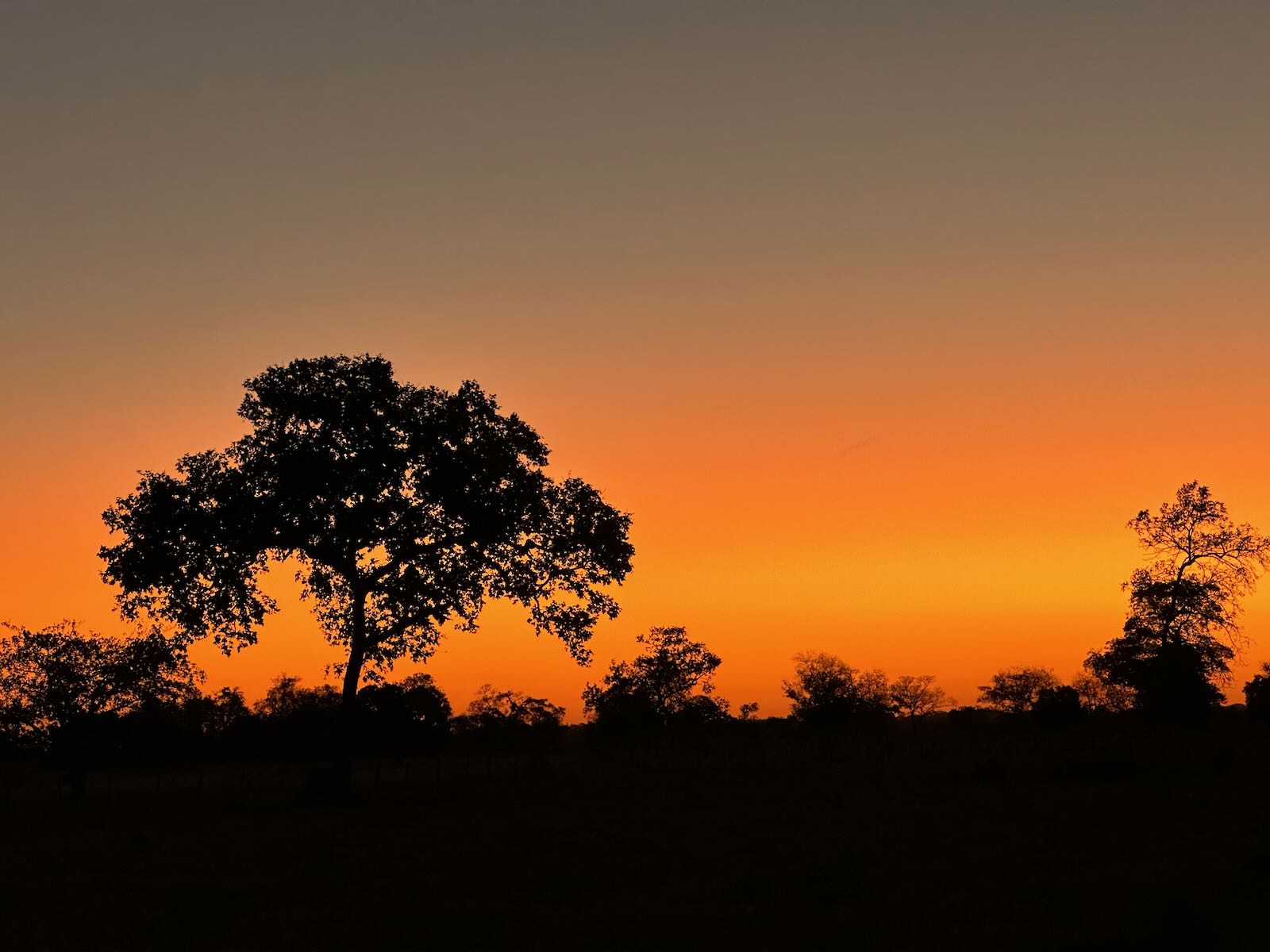
Next: Porto Jofre